-
Posts
1,780 -
Joined
-
Last visited
-
Days Won
8
Content Type
Profiles
Forums
Blogs
Gallery
Events
Store
Posts posted by azyeoman
-
-
An interesting mounted group to a recipient in an unusual unit: the Corps of Military Police with photos and other ephemera.
1939-45 Star, Africa Star; Defence & War Medals. Unnamed as issued and mounted as worn with unusual barb wire device on the Africa Star indicating Maidment was a PoW. With a copy of the PoW roll showing that 3709197 L./Cpl. G.F. Maidment C.M.P. was PoW # 21391(indicates being captured on Crete) at Stalag 383 at Hohenfels. With an original telegram sent to him on 16/12/40 when he was with the Palestine Provost Coy. in Jerusalem; also a notebook containing drafts of two speeches made whilst he was a PoW along with 19 shapshots, mounted for display and mostly captioned on the reverse, taken in North Africa and in the PoW camp.
Stalag 383
Between September and the end of 1942 over 3,000 NCOs were collected there from camps all over Germany, and by April 1943 their numbers had increased to over 4,000, including 320 New Zealanders. The camp, formerly for officers, was built on a gentle slope in the middle of a piece of heavily wooded country, some miles from the nearest town. Instead of being crammed by the hundreds into unpartitioned barracks, the NCOs found themselves allocated small dormitory huts holding fourteen or less, described by one of them as "snug billets". The camp had plenty of room for sports fields and walking space besides, and some larger barracks for theatrical shows and indoor recreation. When Red Cross food arrived in October to supplement the ordinary German prisoner-of-war ration, there was little to complain of at Hohenfels. Much effort went into constructing small stoves so that private food could be cooked when desired. By November one man was writing that he was "fourteen pounds heavier than when he joined up"; others spoke of there being "more freedom and less interference" and of the camp being "far less depressing" than Lamsdorf. The winter proved to be cold, but there was sufficient coal and the men were allowed to collect wood from a nearby forest. For most of them it was the best camp they had been in.
Regarding reprisals with such a large body of non-workers some would be selected as suitable for the tying-and-chaining. It began on 10 October and by the 14th some 1,250 had their hands tied for twelve hours each day. At first, too, they were separated from the rest of the camp and all recreational activity was stopped. Thereafter the history of the reprisals at Stalag 383 is much the same as in the other camps, except that relaxations were introduced more quickly and in the later stages men were allowed to take the shackling in rotation - a month at a time.
After the first week or two shackling interfered little with the recreational life of the camp. Many musical instruments and other material had been brought from other camps; by February several different kinds of orchestra and a choir of 500 voices were performing as occasion demanded, and a number of shows had been presented on the newly-built stage. A stalag "university" had been organised by a former NCO of the Army Educational Corps; and classes under this scheme, together with the activities of no fewer than 56 clubs - from a debating club to a Caledonian society - enabled men to pass the winter months profitably. A first exhibition of arts and crafts was held in February, and in March, with the ground drying up, sport was in full swing. Plenty of parcels from the Red Cross and from home had made the food and clothing position of the camp secure, and men could write with conviction that they were "well and being well-treated".
The non-working British NCOs in Stalag 383 at Hohenfels were launched on a programme of educational and recreational activity which became one of the most extensive in Germany. In this they were greatly helped by material supplied under the scheme carried out by the World Alliance of YMCAs, and in particular by the interest taken in the camp by the delegate of the Swedish YMCA. Mr. Erik Berg. Among the 5000 or so NCOs there at the beginning of 1944, 330 of them New Zealanders, there was sufficient variety of talent and sufficient manpower to initiate and keep going almost every possible kind of camp activity. The 400 huts of the camp were organised into blocks and companies, each with its representative. The quartermastering and disciplinary side of the camp was run by the senior warrant officer, the welfare and other activities by an elected man-of-confidence. The German commandant was described as a "very fair man", and there is ample evidence that the prisoners were given every opportunity to employ their leisure time profitably and pleasantly. Apart from the sports, theatricals, and other amenities common to many camps, there was a swimming pool in which over 200 men qualified for Royal Life-saving Society certificates. In winter it became ice-bound, and with a hundred pairs of skates from the Swedish Red Cross the prisoners turned it into a skating rink. There were bee colonies and practical instruction in apiculture, one New Zealander passing the diplomas for the British Bee-keeping Society. An old stable was converted by the prisoners into a school to accommodate 2000, with separate classrooms and a reading room.
Where materials could not be obtained legitimately they could be purchased with British cigarettes on the black market by German guards. Many wireless-set parts, cameras, watches, and other articles thus found their way inside Stalag 383, for the purchasing power of British and American cigarettes in the cities of Nazi Germany was in 1944 very considerable. The camp had not one but many radios. There were two well-equipped theatres and 15 varied music groups and orchestras. Stage shows like the "Mikado" could run for three weeks. There was every conceivable kind of sporting event. Anzac Day began with a dawn service, followed on with a march past, and finished with a smoke concert. There were 22 exchange marts in operation, selling everything from a powder-puff to a set of false teeth. The latter might be thought to command a limited market but apparently, after remodelling, satisfied its purchaser. Some men had vegetable gardens; others kept rabbits. A New Zealander wrote, "Nora has come along with her third litter"; and later, "Knocked off five yesterday and had the best dinner in four years." For those who did not care for set occupations or educational courses there was a library of over ten thousand books. One prisoner casually remarked in a letter, "I think I've gone through most", and as an afterthought added (perhaps to avoid being thought ungrateful), "but good books can always be re-read." There is no doubt that there was ample scope in Stalag 383 for reading, extensive as well as intensive. One of the Swedish delegates who visited the camp on the occasion of the centenary of the YMCA in July 1944 stated that he had seen no better camp in Germany. In the latter part of 1944 Hohenfels experienced the food shortage and the attention from German security personnel common in other camps, and perhaps more mud than some; but it was better catered for than most in the way of materials and organised activities that could take men's minds off hunger and cold.
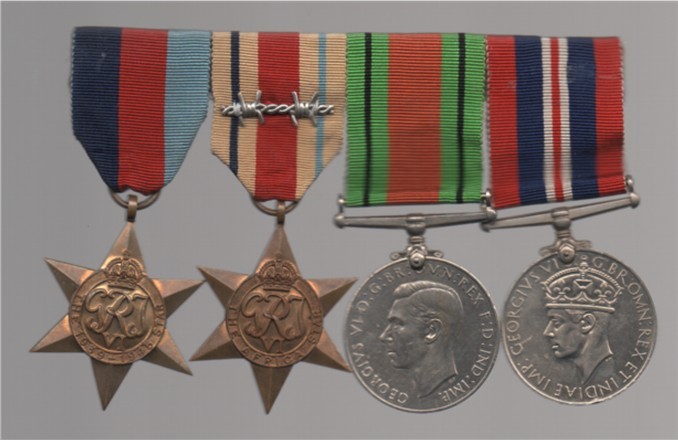
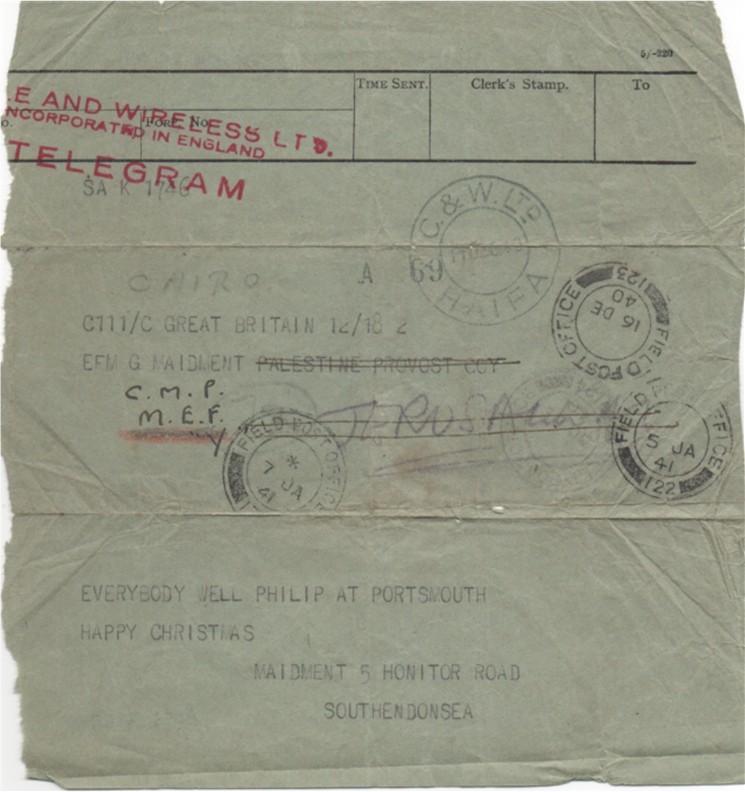

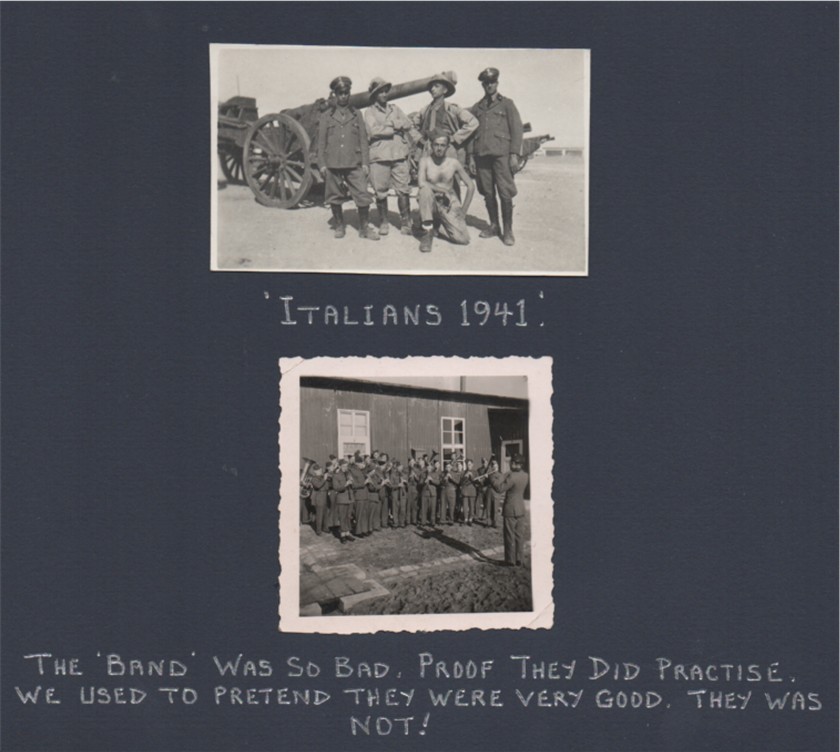
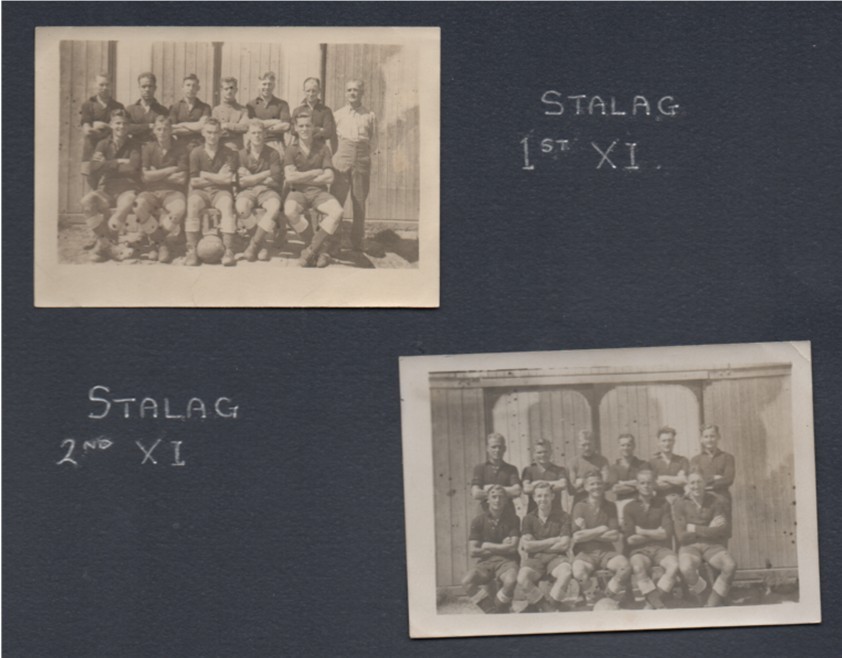
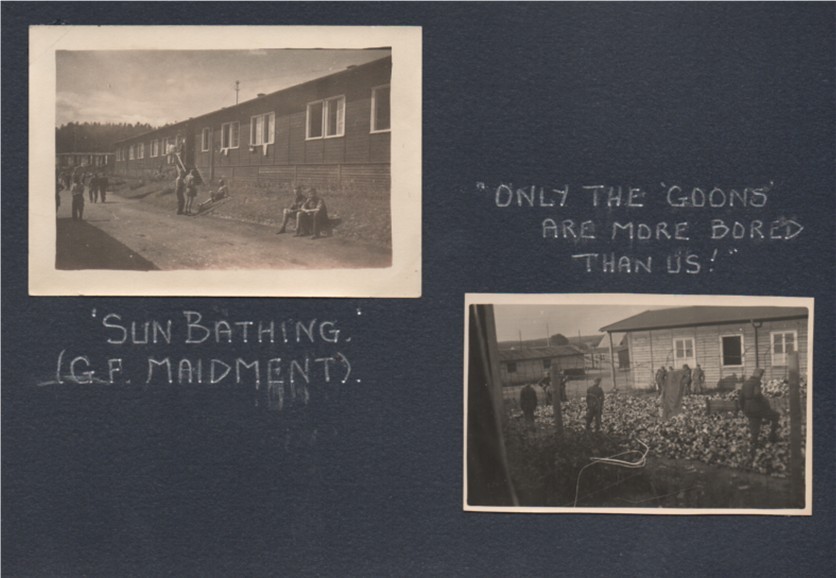
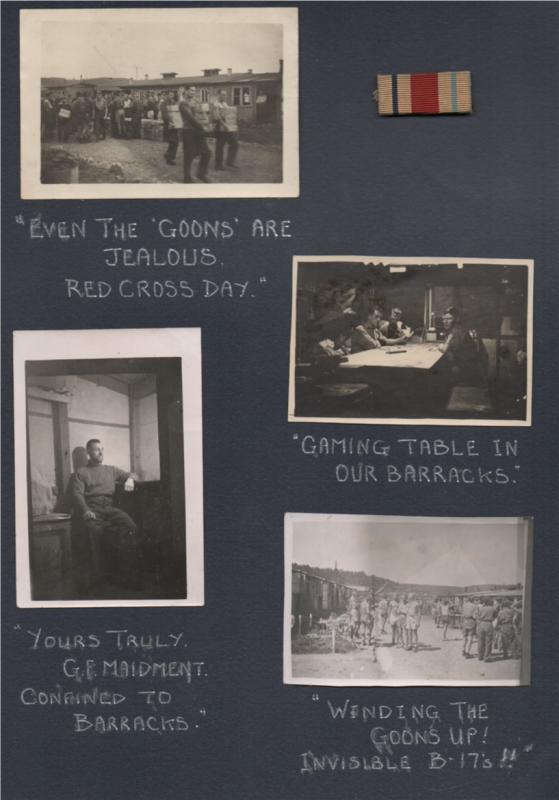
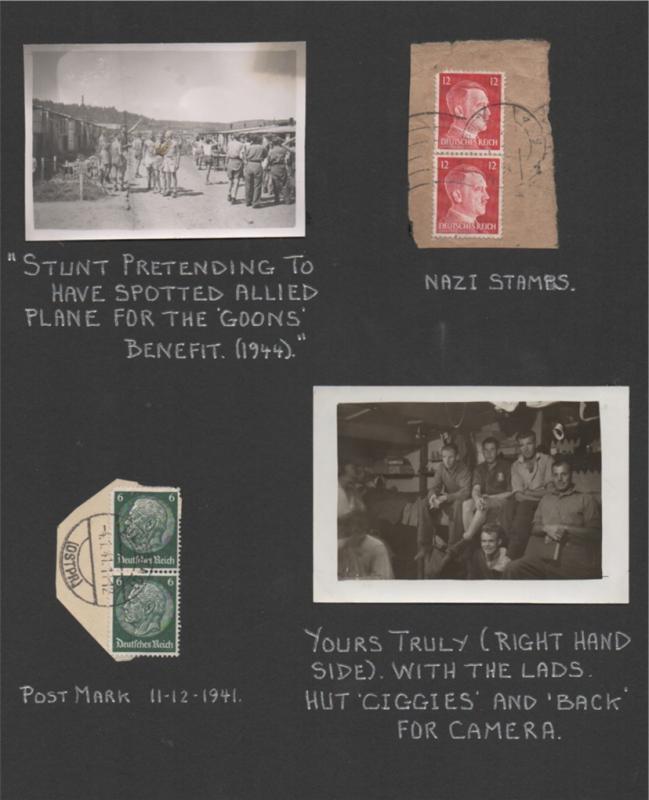 0
0 -
The newest addition is to an Arnhem PoW.
IGS with North West Frontier 1930-31 Clasp - 3851892 Pte. T. Mann Border Regt.
1939 Star
France & Germany Star
Defence Medal
War Medal
Sjt. Mann was orginally in the Border Regt. but later was in the A.A.C. as 6345976 Sjt. T. Mann He was casptured at Arnhm (PoW # 117711) and held prisoner at Stalag XI-B (Fallingbostel). The 1/ Border Regt. formed part of the 1st Air Landing Brigade in Operation Market Garden. Sjt. Mann landed by glider at Arnhem.1st Bn The Border Regiment
War Diary for period 17 - 26 September 1944
Operation "MARKET"
17th September 1944
At 0700 hrs the Bn embussed for the airfields with the exception of one rifle pl and five glider loads of the Tpt Pl not due to leave till 18 Sep; Bn strength 41 offrs 754 OR.
0945 hrs: First glider took off from BROADWELL, followed by C Coy and BB Mortar Pl from BLAKEHILL FARM. Good flying weather, with slight ground mist.
1315 hrs: All gliders less six landed safely with one exception in which one man was injured, but the load was taken out undamaged. Uneventful flight with light flak and small arms fire directed against aircraft when nearing LZ at 6581. COs glider did not arrive. B Coy captured three marines and two MGs 34 in Rly Stn at BUUNDERKAMP 6481. Otherwise no opposition. Bn moved to positions as follows and dug in:-
Bn HQ
A Coy
B Coy
C Coy
D Coy
JONKERSHOEVE 6479
area Wood 6480
area RENKUM 6276
area Wood 6579
area X-rds 633784
Bn position was quiet for remainder of day.
18th September 1944
0700 hrs: B Coy, after inflicting some casualties, were heavily mortared and all vehicles were destroyed by 1400 hrs. All communications with Bn were cut off, but some messages reached D Coy by wireless. After houses had caught fire in coy area the coy were ordered to withdraw towards HEELSUM 6477 by main road. However, being almost surrounded the coy were forced to move along North bank of NEDER RIJN leaving all supporting arms behind, with the exception of MMGs which were carried out.
By 1700 hrs the coy had reached 648776 and were held up by mortar fire, but eventually passed through C Coy at 665780 on way to Phase II posn.
D Coy were mortared and attacks by enemy pls throughout the day, but repulsed all attacks with help of Lt Bty firing on LAURA 6378.
At 1100 hrs LZ 'Z' was bombed and machine gunned by 30 ME 109 and at 1500 hrs second glider lift started to come in. MG 34s opened up from LAURA, but were silenced by mortar and MMG fire from C Coy. Some casualties were incurred in the gliders when unloading.
At 1900 hrs Bn moved off LZ 'Z' to Phase II posn. Many gliders by this time were in flames. All gliders had now arrived, including those missing from first day, with the exception of the CO.
19th September 1944
By 0515 hrs the Bn was dug in at the following positions with 5 A tk guns from 2 S Staffords and 2 x 17 pdr guns from Bde HQ under comd.
Bn HQ
A Coy
B Coy
C Coy
D Coy
in house at 682785
in area GRAFTOMBE 6878
in area WEG 6877
astride main rd at 679784
in area high ground ZILVERENBERG 6778
Bn posn was fairly quiet to 1900 hrs with reports from wireless and Recce Sqn that enemy forces were forming up in area of HEELSUM and NOERDBERG 6476. Bn HQ was strafed by 12 ME 109 at 1500 hrs with no casualties inflicted, and at 1600 hrs re-supply was carried out by RAF, many panniers being picked up in Bn posn. At 1730 hrs Bn HQ moved to house and woods at 690783. All coy posns were attacked at approx 1900 hrs, but all attacks were repulsed.
By 2245 B, C and D Coys were in new posns at
B Coy
C Coy
D Coy
one pl at 685770 - remainder in area X-rds 688772
area KOUDE HERBERG X-rds 6878
area road 686775
Remainder of night active patrols were carried out with nothing to report.
20th September 1944
...infantry attacked C Coy who were forced to withdraw, but counter-attacked and regained their posns. At 1730 hrs re-supply was carried out by RAF and panniers etc were collected from Bn area. At 1930 hrs C Coy were again heavily attacked, but enemy were driven off. B and D Coys had heavy shell and mortar fire, but otherwise nothing to report. A quiet night with occasional mortar fire of nuisance value only.
21st September 1944
From 0530 hrs northern part of Bn posn, including A and C Coys and Bn HQ were heavily shelled. Mortar fire caused many casualties, but our arty fire broke up all attempts by enemy to attack. D Coy re-pulsed infantry and tank attacks with the aid of the Lt Bty. B Coy posn at 685770 was heavily attacked at 0900 hrs and after three tanks had been destroyed, the enemy forced a platoon off the high ground, and the remainder of the coy, after an unsuccessful counter attack, were forced back to house at HEMELSCHE BERG 689776 and wood at 693774. Two platoons from HQ Coy under OC HQ Coy were sent to stabilise the situation. The coy regained some lost ground, and re-formed on forward edge of wood at 692774 to the house and clearing at HEMELSCHE BERG. OC B Coy and a party of approx two pls in strength moved in direction of X-rds at 688772 and all contact with them was lost. Nothing further was heard of this party of the remainder of the operation. At 1900 hrs attacks were made on A and C Coy posns, but were driven off. Remainder of night was quiet except for mortar and occasional shell fire. Food getting very short - one box of Compo per coy issued - the last in Bn reserve.
22nd September 1944
From 0545 hrs the Bn area was the target of all types of mortar and shell fire including that from SP guns. All vehicles, less two jeeps and one motor-cycle at Bn HQ were destroyed. At 0910 hrs a direct hit on Bn amn dump caused considerable damage, and the fire enabled accurate registration by enemy mortars so that any movement from slit trenches resulted in casualties. At 1200 hrs the acting 2IC took a composite force of Border and S Staffords men to B Coy position to clear woods and hold the South-Western approach to the Divisional area. This force was known as "Breeseforce". The Glider Pilot Regt formed a second defence line from "Breeseforce" West of D Coy posn, and contacted C Coy's Southern flank. A and C Coys fought off many attacks during day, medium and heavy artillery of Second Army being of considerable help. At 1600 hrs D Coy reported posn as almost surrounded, and only two offrs and 35 OR still capable of fighting. There was no withdrawal. Food, amn and supplies were almost non-existent. There were no attacks on Bn posn after 1930 hrs, but mortar and shell fire continued throughout the night.
23rd September 1944
By 0200 hrs A Coy had been reinforced by 14 men from Div reserve to replace men sent with "Breeseforce", and were linked to C Coy by a small party of RE. At 0520 hrs the whole Bn posn was the target for very heavy mortar and shellfire and this continued till approx 1200 hrs when A and C Coys were attacked in strength by infantry and SP guns, and flame-thrower tanks. The North flank of A Coy was turned, all officers wounded, and situation very grave. One pl from area Bn HQ under Mortar Gp Comd helped to stem the enemy advance, and by 1530 hrs A Coy were back in original posns. C Coy beat off enemy attacks, and by 1920 hrs situation was almost normal. All coys had considerable casualties, and D Coy were reduced to 25 all ranks. Patrols could not contact the coy owing to enemy infiltration into woods, and wireless was only source of communication. All vehicles had been destroyed, so no further evacuation of wounded from RAP to MDS was possible. The re-supply at 1715 hrs was NOT successful. The night was very quiet, but active patrols could not contact D Coy. 30 Poles from South of River reinforced South flank of C Coy during day.
24th September 1944
Except for mortar fire and occasional shelling there was nothing of importance to report. The enemy made no determined attacks except against A and C Coys at 1905 hrs, which were both repulsed. No food left, Bn amn reserve down to 2,500 rds .303. C Coy now using approx 50% enemy arms and amn. D Coy reduced to 19 all ranks.
25th September 1944
From 0600 hrs enemy mortar and shell fire were prelude to attacks on A and C Coys. Arty fire again broke up these attacks before they could penetrate coy areas. At 1330 hrs CO was informed of Div plan to withdraw all troops to South bank of NEDER RIJN under protection of "Breeseforce" and the Dorset Regiment, who had crossed the river during the night. At 1530 hrs a message was received from D Coy that enemy were putting in a heavy attack on their posn. Nothing was heard of this coy after1600 hrs when posn was being overwhelmed by greatly superior enemy force. At 2000 hrs recce party set off to the river to establish a Bn RV. At approx 2200, after very heavy shellfire, A Coy were attacked by infantry. Troops on Northern flank of B Coy had already withdrawn towards river, so it was decided to send off Bn HQ, S Coy and all walking wounded from RAP, starting at 2240, with A and C Coys holding posns till 2250, and 2300 hrs respectively. C Coy put in an attack at 2300 hrs, and started to withdraw at 2310, and were in Bn rearguard party. The move South through the woods was carried out under shell fire, but all troops reached the "flats" at 693773 without further casualties. The discipline of the Bn was beyond praise, especially during the long wait on the "flats".
26th September 1944
By 0500 hrs the enemy were directing heavy fire on North bank of "flats" with MGs and Mortars and guns. The last known men from the Bn swam across the river at 0515 hrs. Tps made their own way along marked route to MDS at LIENDEN 6870 from whence they were taken by vehicles to NIJMEGEN for food and rest. By 1800 hrs the Bn was collected under one roof. Bn strength was 9 offrs and 241 ORs. At NIJMEGEN it was learnt that the one missing glider with the CO had landed safely by ESCAUT CANAL, and that CO had crossed to the North bank of NEDER RIJN with the Dorset Regiment.
All Map References are taken from
(i) HOLLAND 1:25000 GINKEL Sheet 388 1st edition 1943.
(ii) HOLLAND 1:25000 ARNHEM Sheet 6 NW 1st edition 1944.
APO England
3 Oct 44.
For a personal account see: http://www.paradata.org.uk/article/3940/related/18308 The first photo is of the 1st Bn. Border Regt. marching on parade in 1943. The second one is of the 1st Bn. Border Regt. in action at Van Lennepweg at Arnhem in 1944. The third photo is of The men are Privates L. "Taffy" Jury and W. Malcolm, of "C" Company, 1st Border in Ossterbeek. The fourth photo is of a motor position of the 1st Bn. Border Regt. The fifth photo is of British PoWs surrendering at Ossterbeek and the final photo is of British PoWs being liberated at Stalag XI-B
Sjt. Thomas Mann was a PoW at Stalag XI-B and it has an interesting history. Stalag XI-B was a German WWII PoW camp located just to the east of the town of Fallingbostel in Lower Saxony, in north-western Germany. The camp was built in 1937 as accommodation for workers building the barracks at the nearby Westlager ("Western Camp") of Truppenubungsplatz Bergan ("Military Training Area Bergen"). In September 1939 the huts were fenced in and designated Stalag Xi-B. The first prisoners to arrive were Poles in late 1939, followed by French and Belgians the following year. By the end of 1940 around 40,000 POW were registered there, although only about 2,500 of these were housed at the camp, with the majority assigned to various Arbeitskommando ("work camps") in the area. Close by were the barracks of Landesschützen-Bataillon 461 ("Local Defence Battalion 461"), who guarded the camp. This Army unit was composed of men considered to old or otherwise unfit for front-line service, and were commonly used for guard and garrison duties. The camp and two others at Fallingbostel were liberated on 16 April 1945 by British troops from B Squadron 11th Hussars and the Reconnaissance Troop of the 8th Hussars. They were met at the main gate of Stalag 357 by a guard of Airborne troops, impeccably attired and led by RSM Lord.
Post-war Stalag XI-B was used by the British as an Internment Camp for members of the Nazi Party. It then served as an accommodation centre for German refugees and displaced persons. Eventually the camp was demolished, and a housing estate now occupies most of the area, with the only surviving structure being the delousing hut. Fallingbostel is currently a base of the British 7th Armoured Brigade of the British Forces Germany.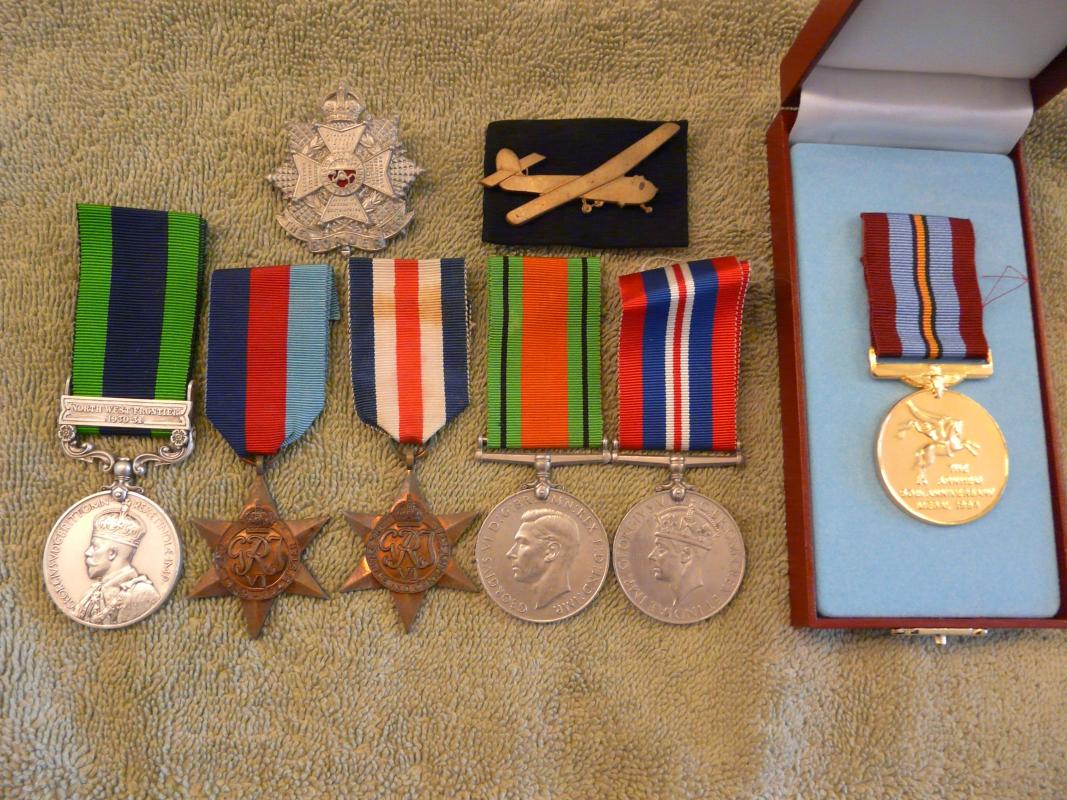
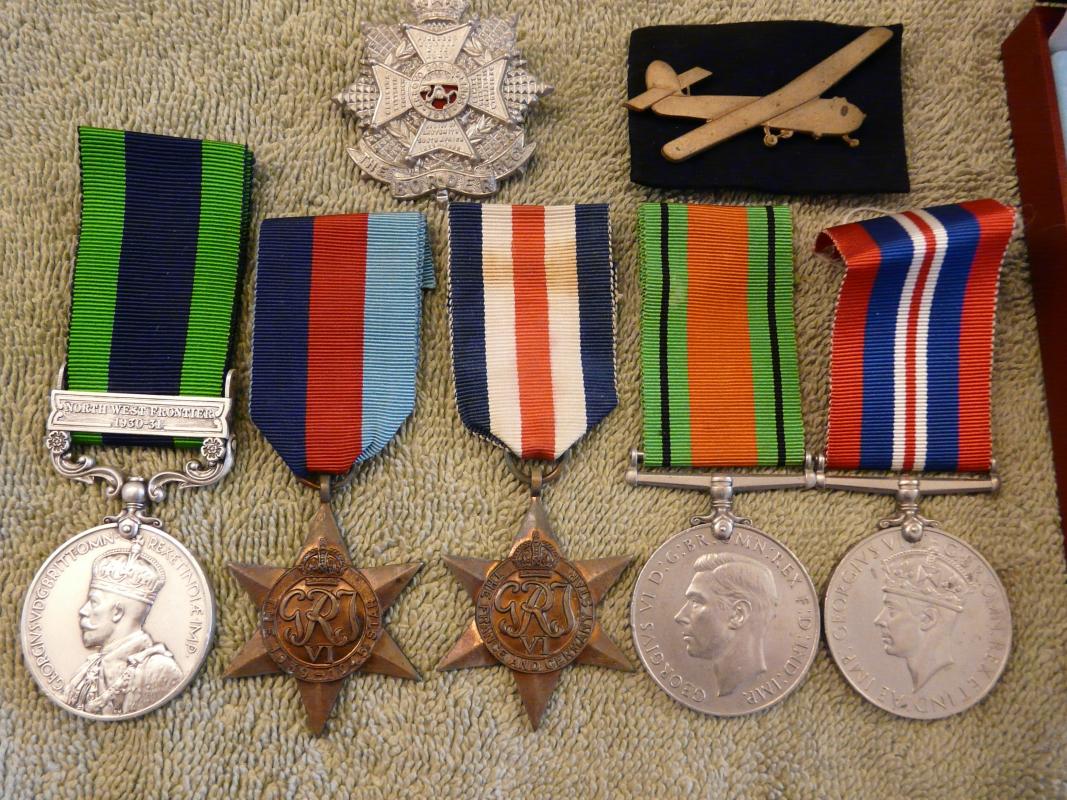
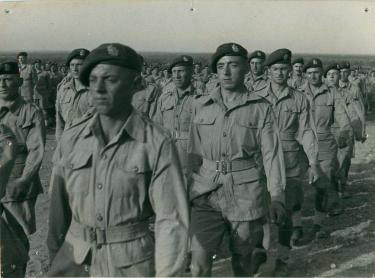
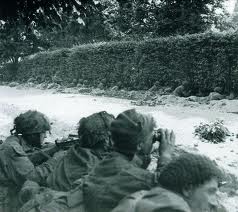
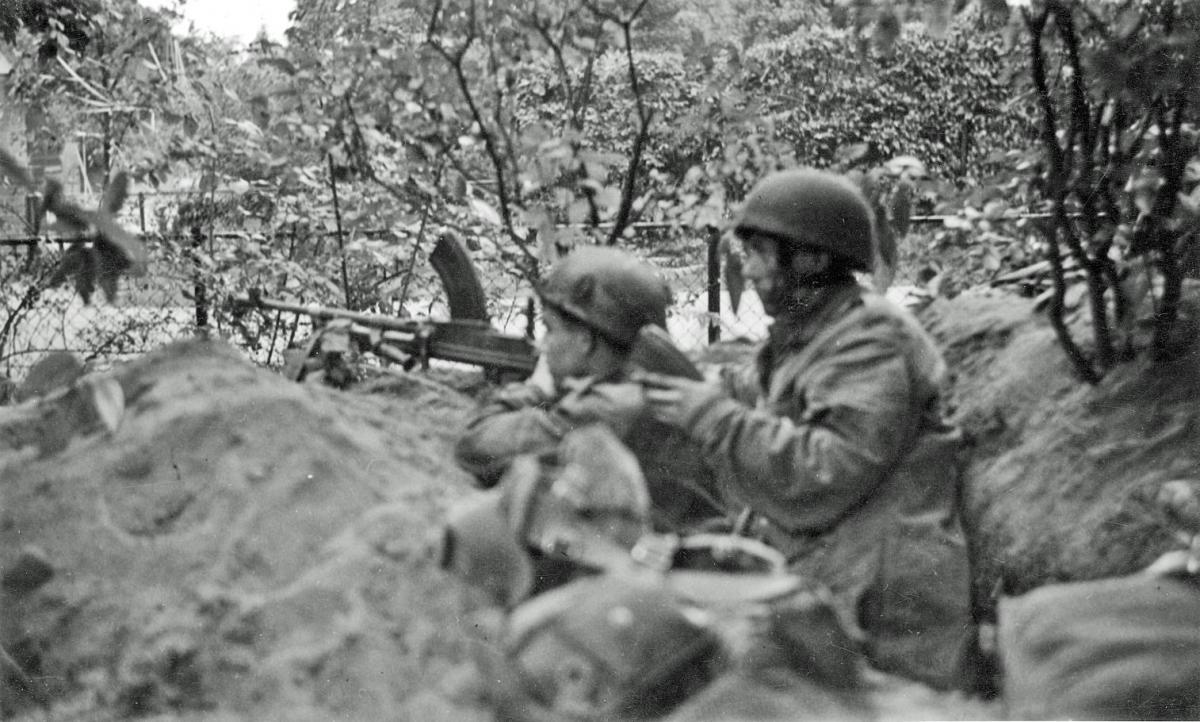
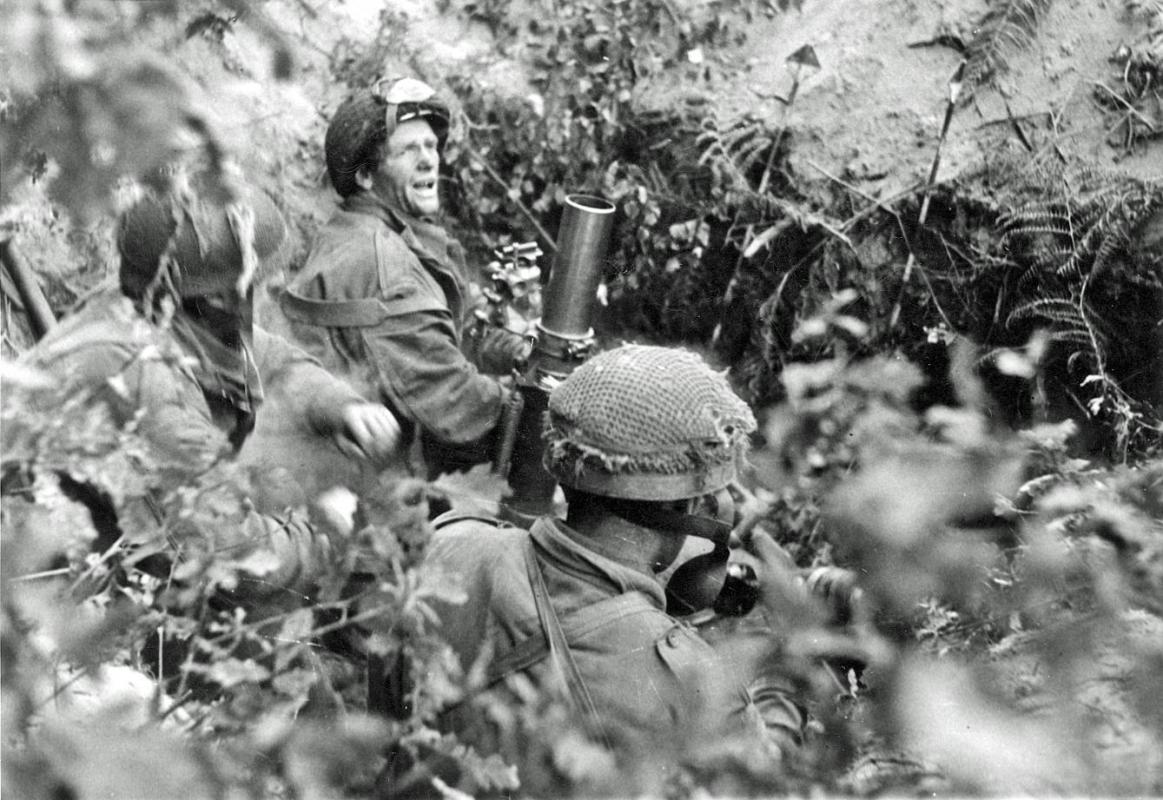
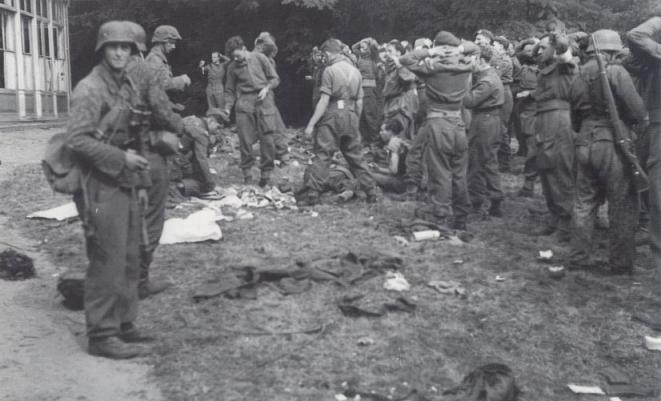
 0
0 -
Here is another good group of four for another disasterous battle to a yeoman in the well known 47th Company (Duke of Cambridge’s Own) Imperial Yeomanry.
QSA with three clasps: CC, OFS, TRANS, officially named to 14172 TPR. C E GARRATT. 47TH COY. 13TH IMP YEO.
1914-15 Star trio officially named to C E GARRATT. B.R.C. & O. ST. J. J. with badge and small named medal on red string.
Portrait photo of Garratt and locket with wife's photo and lock of her hair inside.
Trooper Charles Eustace Garratt was taken PoW at Lindley on 31 May 1900 when the Boers captured over 400 men.
Charles Eustace Garratt was born in 1861, the son of the Reverend Charles Garratt of Little Tew, Oxfordshire.
Like many in the D.C.O. he was a public school and 'varsity' man who volunteered to serve as a Gentleman Trooper. In Charles Garratt's case he was educated at Clifton College and St John's College, Oxford.
After leaving Oxford, Garratt became a fruit grower in Florida. He was in England during the aftermath of 'Black Week' and volunteered for the D.C.O. in the rush to arms on the raising of the Imperial Yeomanry. After the war and his imprisonment he returned to the United States, though he visited England every year, as evidenced during the divorce case in which he was cited by his cousin for seducing his wife. They later married.
Garratt evidently volunteered for service in the First World War as well. He died in New York in 1921 and a memorial was erected to him in Little Tew church.
www.britainexpress.com/counties/oxfordsh...rches/little-tew.htmLindley was laid out in 1875 on the farm Brandhoek and proclaimed a town in 1878. Lindley is named after a missionary, Daniel Lindley, an American Presbyterian minister of the Voortrekkers (i.e. European pioneers).
The Battle of Lindley or Yeomanry Hills
The 13th Battalion of the Imperial Yeomanry Guard consisted of four squadrons, which were involved in the battle of Yeomanry Hills, two miles outside Lindley in the old Orange Free State Republic. This was no ordinary Battalion as it was comprised of the nobility and upper crust of British society. The 13th Battalion had been sent from England to the Cape Colony where they undertook their preparations at Maitland, Stellenbosch and Matjiesfontein. From there they were sent to the 13th Battalion was sent from England to the Bloemfontein, Cape Colony, which had recently been captured from the Boers. From Bloemfontein they were ordered to proceed to Kroonstad by train as far as they could. Finding the railway destroyed they proceeded by horse and on foot until Ventersburg and then eventually reached Kroonstad after spending two nights in the veld. At Kroonstad a signal was received from General Colvile ordering the whole Battalion to join him 40 miles away at Lindley. What was unbeknown to the battalion was that this signal was not sent by General Colvile and was in fact a trap which had been set by the Boers.
After spending another two days in the veld the Battalion eventually reached Lindley in a poor state as there had been no provision of logistical supplies for the last four days. By this stage both the men and the horses were hungry. Upon riding into Lindley in the afternoon there was an initial skirmish where after the Battalion withdrew to the two hills that would later be known as Yeomanry Hills. During the night the Boers brought up extra forces and encircled the battalion who were then cut off with no supply lines. On the morning of 28 May 1900, a messenger who knew the area was dispatched to summon help and a second messenger was dispatched on the 30 May. The two sides continued to snipe at each other with the battalion suffering a number of casualties. On the night of the 30th May the Boer forces brought up two cannons which they used to bombard the Battalion’s position. The tired and exhausted battalion had no way to respond to artillery fire.
The final surrender occurred by chance when a corporal who was isolated in an exposed position, raised a white flag of surrender. His captain then felt obliged by the white flag not to return fire and he then also surrendered. The Officer Commanding, Lt. Col. Spragge then had no choice but to order the entire battalion to surrender. Ironically this occurred at around 4 o’clock on the afternoon of 31 May 1900 when relief was minutes away. In fact the relief force consisting of the 3rd Imperial Yeomanry Guard managed to cut off two cannons and 16 wagons that the Boers were forced to abandon. Ironically all the prisoners were released a few months later when the British forces captured Pretoria and the Boers of the Transvaal Republic neglected to evacuate them in time. This caused a lot of friction between the Free State and Transvaal Boers.

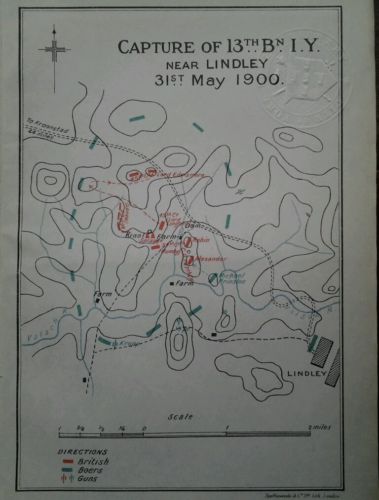
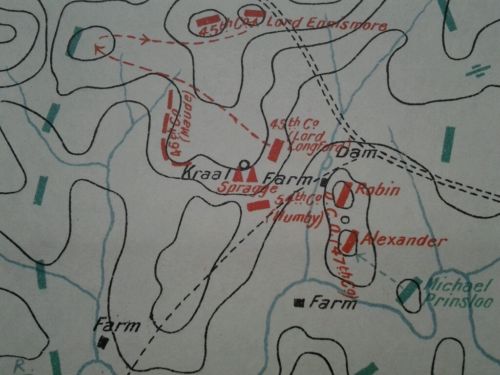
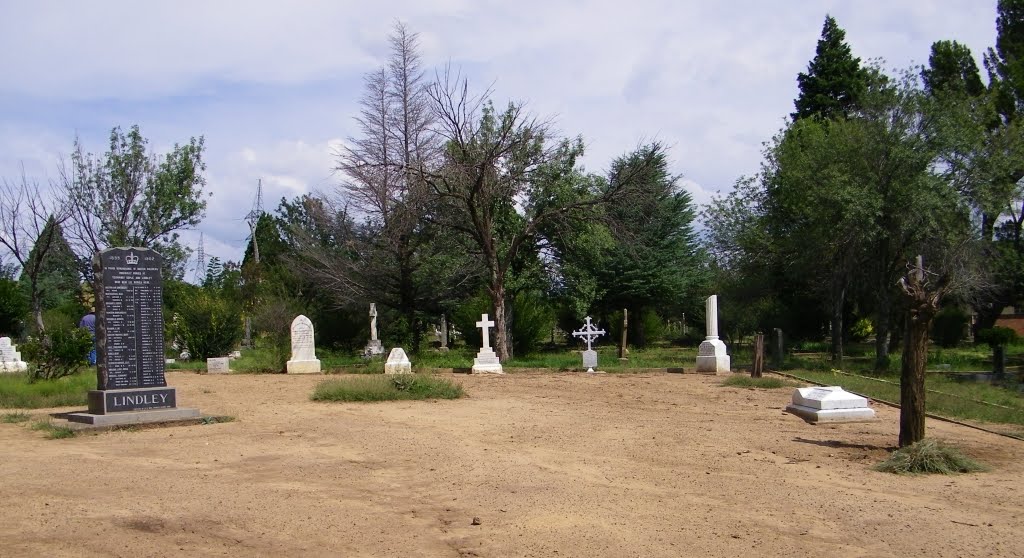 0
0 -
A wonderful Legion Condor trio with an unusual tailor's label.
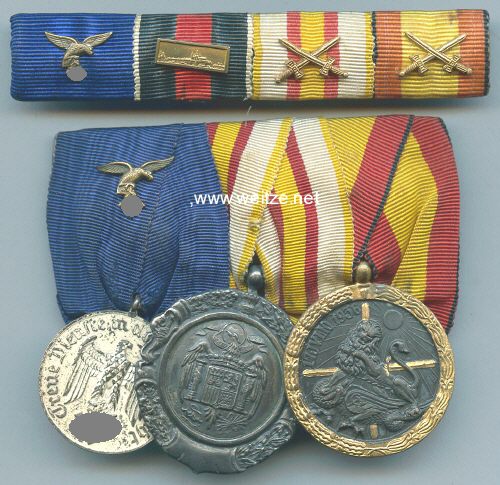
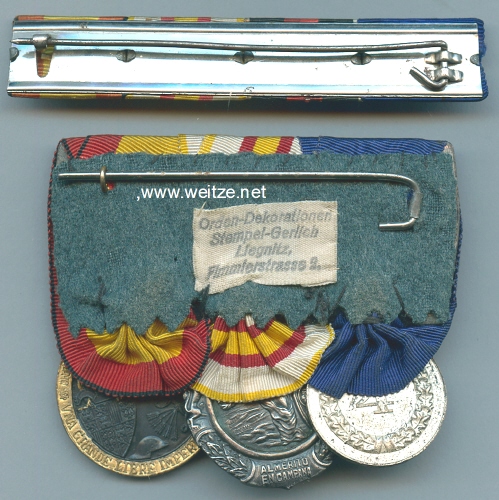 0
0 -
These smaller colonial units are so very interesting and especially those from the Arabian Penninsula and Middle East. Perhaps it's because I worked there for 13 years straight, but I like the history and they're often either not considered or overlooked for the traditional British and Commonwealth units.
Thanks.
0 -
The latest Boer War PoW Medal for the collection is a singlton.
QSA 1899-1902 with Cape Colony, Orange Free State, Transvall and South Africa 1901 clasps.
Officially named to: 1851 Pte. J. Wheatcroft, Derby Regt. (Sherwood Foresters) who was taken prisoner of war at Roodewal also known as Rhenoster Camp on 7 June 1900. Discharge papers indicate James Wheatcroft was from ST. Mary's, Newark, Nottinghamshire and that he served until July 1901.
The oil on canvas is entitled "Soldiers Defending Rhenoster Kop in the Boer War. For De Wet's account see:
http://www.angloboerwar.com/books/74-de-wet-three-years-war/1527-de-wet-chapter-xiv-roodewal
According to sources,
On the line of communications in June 1900 there occurred several "regrettable incidents" (as the press would describe them) whereby a large bag of British POWs were taken by the Boers; who at the same time wreaked havoc upon Lord Roberts' supply line. One such incident involved the surrender on 7 June 1900, after a stiff fight and many casualties, of the 4th Militia Bn of the Derbyshire Regt. at Rhenoster Camp.
Several battalions of the Militia were in SA following the national uproar over Black Week. Among other sources of manpower, nine Militia battalions were asked to volunteer for active service. The 4th Derbys was one of them and left Southampton on the transport ship "UMBRIA" on 11 January 1900 and landed at Port Elizabeth on 2 February 1900 for duties on the LofC.Some describe the action as having taken place at Roodeval (including the SAFF casualty list) wheras others correctly locate it at Rhenoster camp. Sometimes the details vary - however it is sufficient to record that DeWet's forces conducted a triple hit on the British LofC in the OFS and, in the words of Conan Doyle, at Rhenoster camp, the Derby Militia were outnumbered, out generalled and without guns.
They had been tasked with guarding the supply depot on both sides of the Rhenoster river; however no entrenching was conducted. The Boers under Froneman hit the camp with concentrated rifle fire at 0200 and later employed artillery. At 1000 hrs, after suffering 156 killed and wounded, the camp surrendered and about 500 men went into captivity. The 1900 edition of Conan Doyle's work comments that "there was no shadow of stain upon the good name of the only militia battalion, which was ever seriously engaged during the war". Some opinioned that bad staff work was the root cause of the incident.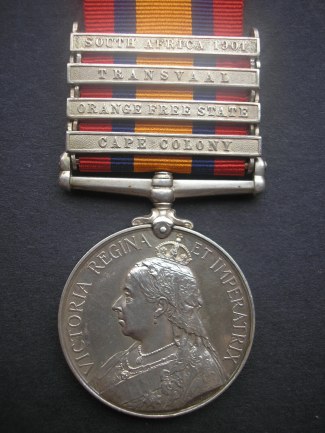


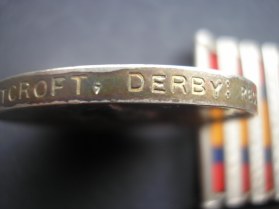
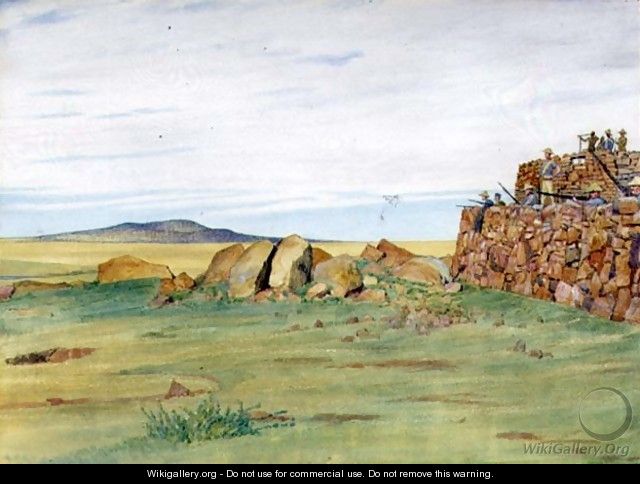 0
0 -
A nice set of insignia consisting of a cap badge with two shoulder titles and a GSM 1918-1962 with Arabian Penninsula clasp.
Named to: 9368 Pte. Abdullah Saleh Saidi A.P.L.
The Aden Protectorate Levies (APL) were a military force raised for the local defense of the Aden Protectorate. The Levies were drawn from all parts of the Protectorate and were armed and officered by the British military. They used the Lahaj emblem of crossed jambiyah (traditional curved double-edged dagger) as their badge.
The APL were formed on 1 April 1928 primarily to protect Royal Air Force stations following the change of status of Aden to an Air Command in April 1927. Their secondary role was to be that of assisting the civil police. The APL also formed a Camel Troop. Prior to 1928 the British garrison in Aden had comprised two infantry battalions, one British and one Indian, plus Royal Artillery units and detachments of Sappers and Miners. A locally recruited infantry unit, known as the 1st Yemen Infantry, had been raised in the Aden Protectorate during 1917-18 for service in World War I but had been disbanded in 1925.
Colonel M.C. Lake of the British Indian Army was the first Commanding Officer until Lt. Col. J.C. (Robby) Robinson took over command in 1929 and remained as C.O. till 1939. In 1928 the APL comprised two British officers and six platoons of Arabs (each one officer and 34 men) recruited from tribes in the Western Protectorate states, they had 48 camels and 8 mules. The APL recruited from the various tribes which lived in the foothills or the higher mountainous regions of the protectorate. During the early years of the APL's existence a number of junior commissioned officers and senior NCOs were Indian.
Based in Aden Colony was the APL Depot Battalion, the Levies Base and Training Organisation. The Depot included married quarters, a neonatal clinic, a school for children, the APL Band and the APL Camel Troop. Air supply and other repair and supply units also were based there. The APL Hospital (ALH), located near Khormaksar, was a 160 bed RAF general hospital where free medical care was given to the APL's 1,500 men active members and their families, and also to former members, about 10,000 people in all. The ALH also provided the medicines to the APL. The hospital CO was an RAF doctor assisted by two RAF warrant officers, and an administration and supplies staff. Medical coverage was provided by three RAF doctors and a surgeon who were assisted by local doctors. The other RAF personnel were two male nurses, two laboratory technicians and a Pharmacist. Local people made up the rest of the staff and all of them would have been trained on site.
Arab officers were called Bimbashis, with one in each battalion being responsible to the Commanding Officer for Arab Administration. They held Governor's Commissions as 2nd Lieutenant (MulazimIth Thani); Lieutenant (Mulazim Al Awal); Captain (Rais); and Major (Wakil Qaid Ith Thani). During the period of RAF control prior to 1957, a different system of Arab rank designations had been in place at all levels. The senior Arab rank was that of Lieutanant Colonel (Qaid Al Awal). During WWII the APL was expanded from 600 to 1,600 men. The Levies operated in Aden and the Western Aden Protectorate but also provided garrisons at Socotra Island and Sharjah. By 1939 an APL anti-aircraft wing had been created, which shot down an Italian plane in the course of the war. In 1942 a six year process of replacing British Army personnel serving with the APL with RAF Regiment officers and airmen commenced. This policy led to the reorganisation of the Levies into a tactical force of two wings, each about the equivalent of a battalion, plus an administrative wing. A third infantry wing was added after 1948 After the war, during the December 1947 anti-Jewish riots, some Arab personnel of the Levies proved ineffective in controlling inter-communal violence and fired indiscriminately into Jewish houses, killing several of the inhabitants.
The Levies reverted to War Office control in 1957 with British Army officers and NCOs replacing RAF secondees. The AFL headquarters was at Seedaseer Lines in Khormaksar. "Up country" bases and out-stations were maintained at: Dhala, Mukeiras, Geihan, Zinjibar, Ataq and Lodar. In 1958 the APL, supported by British troops and the RAF, repulsed border intrusions by Yemeni forces in the Jebel Jihaf region. Border clashes with Yemeni tribal groups continued through the late 1950s. By 1960 the APL consisted of four rifle battalions each of which had 3" mortars, medium machine guns and signallers, and a Mechanical Transport Platoon. The APL was a brigade-equivalent force with its own air supply and air liaison officers and the Senior Arab Officer. Additional units included the APL Armoured Car Squadron, the APL Signal Squadron, the APL Band and the APL Camel Troop. The APL Camel Troop was a ceremonial unit which conducted many public appearances.
On 30 November 1961, following the creation of the South Arabian Federation, the APL changed its name to the Federal Regular Army. After 1967 those British trained personnel considered politically unreliable were purged from the reorganised armed forces of the newly established People's Republic of Yemen.
If interested, for another Arabian Penninsula thread to a different unit see: http://gmic.co.uk/index.php/topic/61564-trucial-oman-scouts/
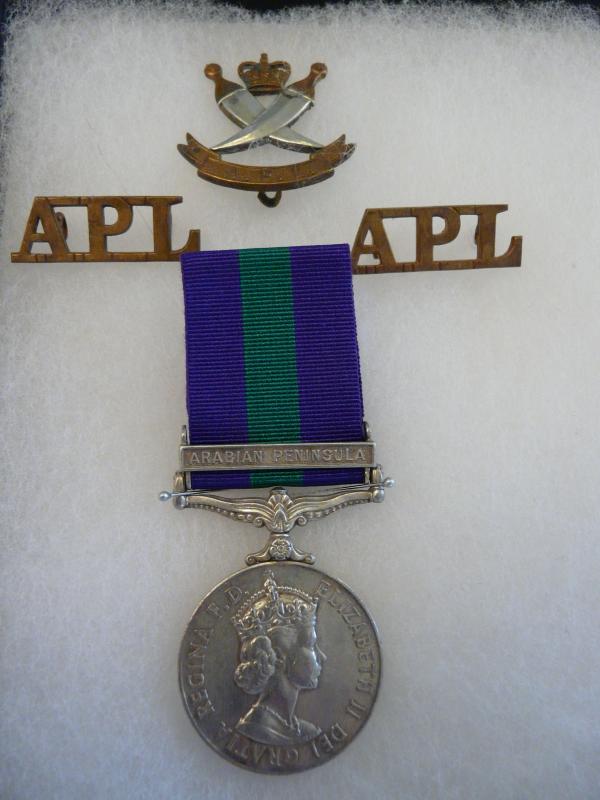
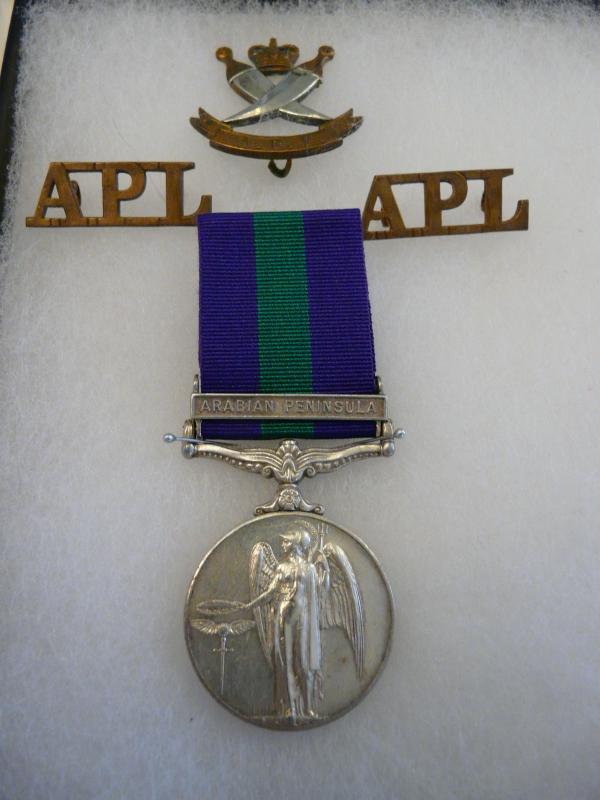
 0
0 -
A very nice WWI & WWII bar.
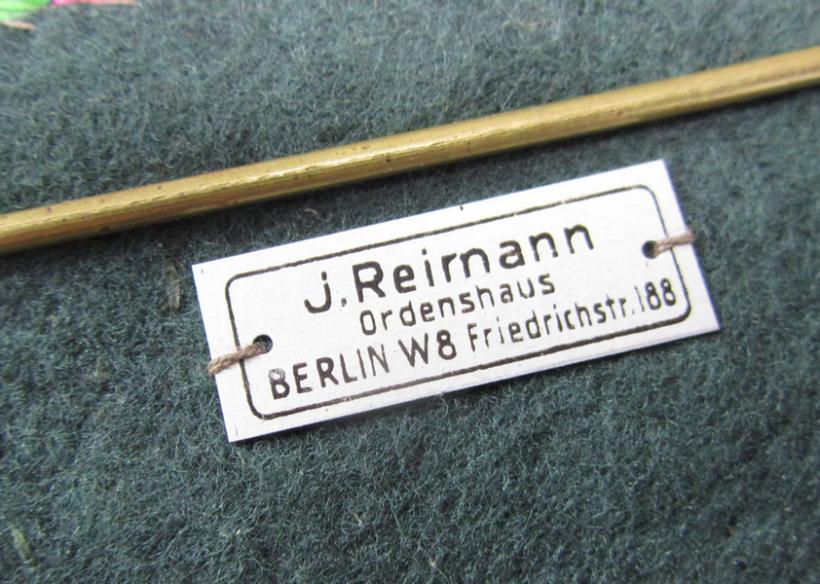
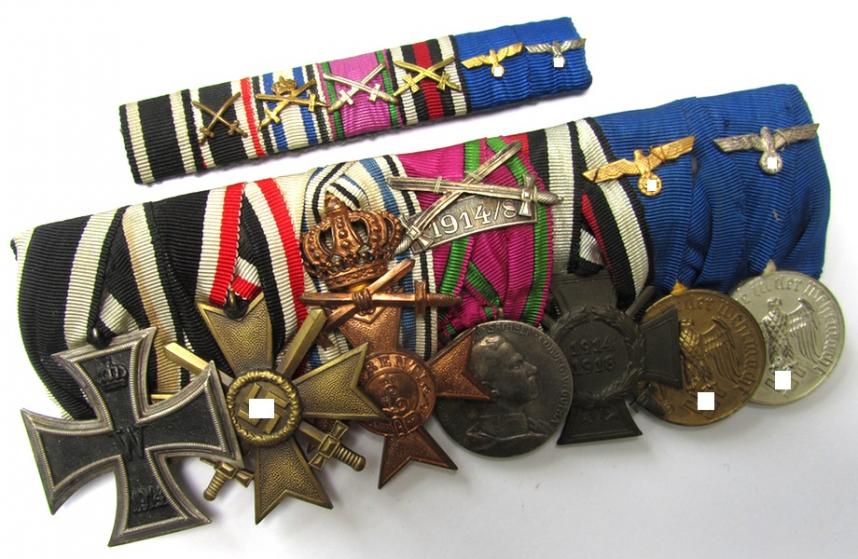
 0
0 -
http://gmic.co.uk/uploads/monthly_05_2014/post-7116-0-07089600-1399494689.jpghttp://gmic.co.uk/uploads/monthly_05_2014/post-7116-0-58013500-1399494738.jpgNot Australian or New Zealand, but the latest addition to this small collection of Commonwealth groups for Vietnam
A rare Canadian ICSC Medal Group - The International Commission and the very rare Canadian ICSC Medal Group named - The International Commission for Supervision and Control Indo-China (ICSC) Medal (CAPT. C.R. GARSTANG), Canadian Forces Decoration QEII (CAPT. C.R. GARSTANG), and Canadian Special Service Medal, mounted as worn, missing pin, rare, extremely fine.
ICSC was an interesting organization that while nominally neutral, helped the CIA in Vietnam. Listen to Blair Seaborn's (The Head of the Canadian Contingent in the ICSC) interview: http://www.cbc.ca/archives/categories/war-conflict/peacekeeping/peacekeepers-and-peacemakers-canadas-diplomatic-contribution/diplomacy-or-complicity.html
For photo of then Lt. C.R. Garstang, IO go to: http://www.canadianguards.ca/Albumbc.htm and view:
LtoR Capt JR White A/Coy Comd 8 Coy, Lt CR Garstang IO* and LtCol HEC Price, CO 2 Cdn Gds, at Haltern 1958.
* Intelligence Officer
See photo below - Garstang is in the center.
London Gazette 16 October 1951 p. 5360
Territorial Army
2nd Lt. C.R. Garstang (382451) is granted the rank of Lt. 11th Feb. 1951.
London Gazette Suppliment 16 October 1951 p. 5361
2nd Lt. C.R. Garstang (382451) from Active List, to be 2nd Lt. 8th May 1951, retaining his present seniority.
London Gazette 27 March, 1956 p. 1804
W. Yorks.
Territorial Army Reserve of Officers
Lt. C.R. Garstang (382451) relinquishes his commission 24th of February 1955 on appointment to a commission in the Canadian Army.
INTERNATIONAL COMMISSION FOR SUPERVISION AND CONTROL SERVICE MEDAL (ICSC)
Origins: Following the end of the Second World War, instability in French Indochina (Vietnam, Laos and Cambodia grew into a full-fledged conflict as the Viet Minh waged a war of independence against French forces. In July 1954 a conference was held in, and accords were signed. Three separate commissions were established, one each for Laos, Cambodia and Vietnam. The accords further divided into two separate parts, North and South. The International Commission for Supervision and Control (ICSC) was charged with supervising the cease-fires and the with-drawl of French military personnel, facilitating the return of refugees to their homes and patriating of civilian and military prisoners. The commission was quite literally intended to supervise and control the implementation of the accords.
At the direction of the commissions Indian delegation, a medal was authorized by the ICSC in February 1961, although approval from the Department of National Defence did not come until March 1962. Even then, the department was still considering whether or not to institute a Canadian General Service Medal rather than allow Canadian personnel to accept medals from international organizations. The General Service Medal project was never approved, therefore the ICSC medal was sanctioned.
Criteria: Awarded for ninety days service consecutive or cumulative as a member of the Commission between 7 August 1954 and 28 January 1973. Persons killed while serving with the commission were automatically awarded the medal posthumously.
Medal: A circular antiqued bronze medal, 34mm in diameter, bearing the crossed flags of Canada and Poland, with the arms of India in the center and the dove of peace at the point where the flags cross, circumscribed by the words International Commission for Supervision and Control, with the word Peace at the base. The reverse bears a map of Indochina with the names of the three countries Vietnam, Laos and Cambodia.
Suspender: A floral motif connects the mounting suspender to the medal: the suspender through which the ribbon passes appears to be shoots of bamboo.
Ribbon: A 32mm wide ribbon of three equal stripes: dark green, white and red. The green represents India, the white peace and the red Canada and Poland.
Bars: None
Other: The medal was made by Bartons Jewelers of Bangalore, India. The recipients name and rank were impressed on the rim in block capitals, and the impression was then filled in with white paint. This award was superseded by the ICCS Medal.
Number of Awards: 1,550 in total with Canada getting around 300 plus. The exact numbers available are conflicting and as of now are not verifiable.
According to Guy Paquette in his Reunification of Vietnam: The Canadian Connection
The French military defeat at Dien Bien Phu swiftly lead to negotiations and from May to July, 1954, a conference was convened in Geneva, Switzerland, to resolve the problems within Indo-China; specifically Vietnam, Cambodia and Laos. The Geneva Accords was drafted and provided for Vietnams return to independence - but, not before free elections were scheduled for July of 1956. Until then, Vietnam was temporarily divided into two states to enable the separation of the opposing parties. The Communists were to go to the north of the 17th parallel while others were to withdraw to the south.
A three-nation observer force was installed under the auspices of the Geneva agreement. Canada, Poland and Indian made up the International Commission for Supervision and Control (ICSC). This non-United Nations (UN) force consisted, respectively, of western, communist, and neutral administrators and military personnel. It was an unexpected and unique invitation for Canada that saw members of External Affairs and the military on a mission together. In short order, 133 Canadians were dispatched to locations throughout Indo-China during the fall of 1954. The ICSC mission was to ensure that the cease-fire was obeyed, that military forces and refugees returned to their areas and that cross-border movement of unauthorized military personnel and war materiel was controlled throughout Cambodia, Laos and Vietnam. As part of the Agreement, the international observers were to monitor the elections that would determine Vietnams future as a nation.
The members of the Canadian Delegation were witnesses to history from the onset. The former Viet Mihn alliance crumbled as Ho Chi Minh and his communist allies seized power in the north while Emperor Bao Dais nationalists were left to administer the south. However, it didnt take long for Bao Dai to be flushed out of the scene as the USA intensified its involvement in the politics and warfare of Southeast Asia. In October of 1955, the anti-communist, U.S. backed, Ngo Dinh Diem declared the south as the Republic of Vietnam and announced himself as its president.
The promised elections that Canadians were to observe never transpired. Ngo Dinh Diem continued to squash any talk of elections by refusing to negotiate with the North all the while suppressing any opposition to his rule. His defiance spoiled the hope of reunification and this lead to the Second Indochina War, better known as the Vietnam War of the 1960s. Canadians left in 1959 but rejoined the ICSC in the 1960s. In 1965, two Canadian soldiers were killed during the observer mission as Vietnam was engulfed in war between communist and democratic powers. The UN finally pulled the ICSC out of Southeast Asia as the war peaked in 1969.
Vietnam, the former colony, would not be a nation again until the north and the south were united - and - the communists had plans for that eventuality. The Canadian connection to Vietnam continued as a result of the January 1973 peace talks between the USA, the Vietcong, North Vietnam and South Vietnam. Canada returned to the embattled area to monitor peace under the United Nations new International Commission of Control and Supervision (ICCS). However, the political divisions ran too deep and the desire to be one country was too strong. In 1975, a well-coordinated invasion of the south by communist forces sealed Vietnams fate. The former colony was reunified and once again a nation.
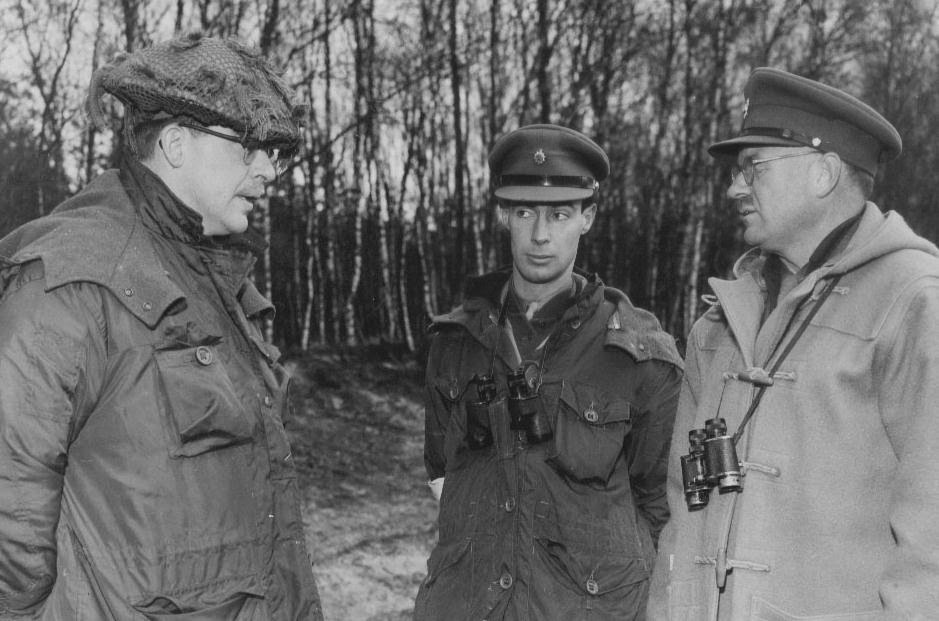 0
0 -
Another Boer War pair for the collection:
Queen's South Africa Medal (Bar - Transvaal) named to 4570 Corpl: J. Martin. Rl: Lanc: Regt. King's South Africa Medal (Bars - South Africa 1901 and South Africa 1902) named to 4570 Pte. J. Martin. Rl: Lanc: Regt. Joseph Henry Martin was born in Buxton, Derbyshire. Before the Boer War, he had joined the militia in 1894 and made a career of the army as he was already in the regiment and served in Singapore with the 1st Bn. from 17 January 1899 to 26 March 1900. The single clasp "Transvaal" suggests that Martin was with the replacements after the disaster at Spioenkop on 24 January 1900.
QSA is not listed because his page (WO 100/168 p88) is missing, but KSA is listed on WO100/320 p54.
Cpl. Martin was taken prisoner at Vryheid on 11/12/1900 and was released on 04/01/1901. The 2nd Bn. served in South Africa from December 1899 to May 1902 and had heavy casualties with 139 men killed or died of wounds, 40 died of disease, 258 wounded and 67 taken prisoner. In October 1900 the unit became the garrison at Vryheid with a strength of about 900. It was based at Lancaster Hill. On 11/12/1901, at about 2am, 1,200 Boers attacked the hill from the north. The defenders fought hard but were nearly overwhelmed and when Lt/Col. Gawne led reinforcements out of the town he was mortally wounded. The Boer advance was eventually stopped by heavy defensive fire and the barbed wire at the top of the hill.
The Military History Journal, Vol. 10 No. 4 (December 1996) contains an excellent article by Mark Coghlan titled “The Transvaal Outbreak : The Boer attack on Lancaster Hill, Vryheid, 11 December 1900”. This can be downloaded from the Internet. It is well illustrated with a map and contemporary photos (see below) and covers the action extremely well. It highlights the unequal outcome of the skirmish in terms of casualties; all indications are that the Boer Commando’s had only two men killed. There is no mention of the number of Boers wounded and/or taken PoW. The photo is of the maxim gun emplacement on Lancaster Hill.


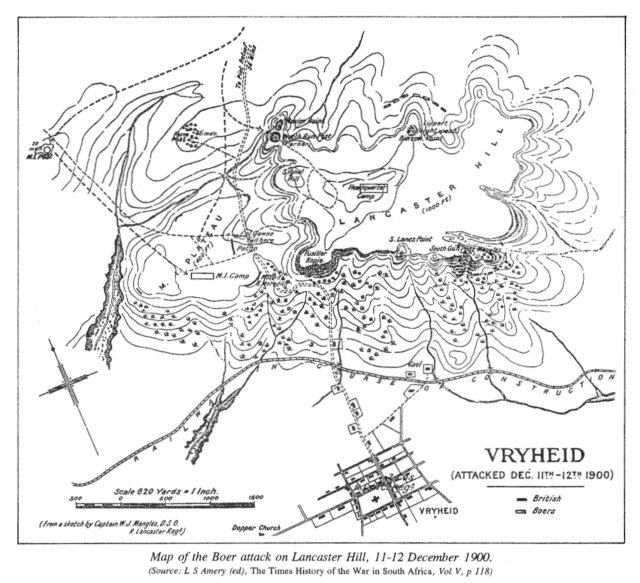 0
0 -
Very nice collection!
Thank you. There's an updated version of it here: http://gmic.co.uk/index.php/topic/56543-the-korean-war-is-not-forgotten/
Hopefully you'll see some interesting things there. All the best,
0 -
The latest addition is a WWI RAF PoW pair with IGS; sadly missing its Victory Medal (Please contact if you know of its whereabouts). Both named to: British War Medal 2.LIEUT. E.C. USHER-SOMERS, R.A.F. India General Service Medal bar Waziristan 1919-21 F/O E.C. USHER-SOMERS, R.A.F. Pilot, 46 Sqd. (Camels) P.O.W. 17.9.1918. Shot down by ace Josef Mai* (Pour le Merite winner, but never awarded his PLM due to the war ending) 26th of 30 Victories. Copy I.G.S. roll, 20 Sqd. The Sky Their Battlefield 17.9.1918 (Black September) seen in combat Missing P.O.W. Bloody AprilBlack September page 189 Lieut. C.E. Usher-Summers confirming he was Mais 26th Victory. Continued service in the R.A.F. & was killed 16.5.1924 in service.
Edmund Cronin Usher-Summers was born on 28 January, 1900. Before entering the RNAS, he served as a Lance Corporal in the 2nd Hants. Regt. from 3.1917 to 20.7.1917. He was posted to Greenich on 30.10.1917 and then Eastbourne on 8.2.1918 as Temporary Pro Flight Officer. He was appointed 2nd Lt. In the newly formed RAF in April, 1918 served in 20 Sqd., 2 Indian Wing in Waziristan Operations in 1919-1921. He was promoted to Flying Officer (Observer) in September, 1920. He had been recommended by N. L. Christantian, Principal of St. John's College, Southsea. His mother was listed as his next of kin; Mrs. Florance Usher-Somers C/O Mrs. Edleroake, Westhill Postishead, Somerset.
No. 46 Squadron was formed at the RAF Wyton aerodrome on 19 April 1916 from a nucleus trained in the No. 2 Reserve Squadron; it moved to France in October of that year equipped with Nieuport two-seater aircraft. The squadron undertook artillery co-operation, photography, and reconnaissance operations until May 1917, when it took on a more offensive role after rearming with the Sopwith Pup. The change from a corps to a fighter squadron came at a moment when Allied air superiority was being seriously challenged by Germany, in particular through the introduction of the "circuses" formed and led by Manfred von Richtofen. Operating under the 11th Army Wing, the squadron was intensively engaged and had many combats with the enemy. In July 1917, No. 46 Squadron returned to Sutton's Farm (later RAF Hornchurch), Essex, for the defence of London, which had been heavily raided by Gotha bombers a short time before; no enemy aircraft penetrated its patrol area The squadron returned to France at the end of August. In addition to offensive patrol work, the unit undertook extensive ground strafing and did close support work in the attack on Messines Ridge. In November 1917, the squadron was newly equipped with Sopwith Camels and gave valuable assistance to the infantry in the Battle of Cambrai attack. During the closing stages of the war, the squadron bombed lines of communication and ammunition dumps in the enemy's rear areas. Intensive low-level ground attack work was carried out after the German Spring Offensive in March 1918, the unit suffering high casualties as a result. The squadron also did work in the German Great Retreat in the few weeks before the signing of the Armistice. In November 1917, Lieutenant (later Major) Donal MacLaren joined the squadron. His first dogfight was not until February 1918; in the remaining nine months of the war, however, he was credited with shooting down 48 aeroplanes and six balloons, making him one of the top fighter aces of World War I. Also during 1918 Lieutenant Victor Yeates, the author of Winged Victory, served in the squadron. Another book written by a 46 Squadron pilot was No Parachute by Captain (later Air Vice Marshall) Arthur Gould Lee. Both Lee and Yeates served with Captain Cecil (Chaps) Marchant, another ace, who instigated and, for more than 40 years, organised the squadron reunions. By November 1918, 46 Squadron had claimed 184 air victories, creating 16 or 17 aces. Other notable aces in the squadron included: George Thomson, DSO, MC, DFC; Harry Robinson, MC; CdG; Clive Brewster-Joske, MC; Roy McConnell, DFC; Maurice D.G. Scotts, MC; Maurice Freehill, DFC; and Philip Tudhope, DFC. Towards the end of January 1919, the squadron was reduced to a cadre, and in February it was returned to England early; it was disbanded on 31 December.
*Major Josef Mai (3 March 1887 - 18 January 1982) Iron Cross First and Second Class, was a World War I fighter pilot credited with 30 victories. Josef Mai was born in Ottorowo, Galizien, to ethnic German parents located in the then Austro-Hungarian Empire. His original military service began on 3 October 1907 with the 10th Lancers. When World War I began Mai was part of the offensive aimed at the French capital of Paris. He later took part in the fighting around Warsaw, Poland. In 1915 he campaigned along the Dniester River. He also served at the battles of Verdun and the Somme. Mai joined the German air service in 1915; he trained at the Fokker plant at Leipzig. He originally served in Jasta 29, flying reconnaissance aircraft in 1916. He then underwent fighter training and joined Jagdstaffel 5 in March 1917. As a Vizefeldwebel (Vice Feldwebel, senior NCO), he was one of three non-commissioned pilots (along with Fritz Rumey and Otto Koennecke) who flew together so successfully they ended up claiming 40% of the Jasta's victories between them, and making Jasta 5 the third highest scoring unit of the war. The trio was nicknamed "The Golden Triumvirate".
Mai scored his first victory on 20 August 1917, flying an Albatros D.V, and downing a Sopwith Camel of No. 70 Squadron. His fifth victory, over a RAF SE.5a, was on 30 November. Mai did not score again until 13 January 1918. On 25 April 1918 he forced down British 18-kill ace Lt. Maurice Newnham of No. 65 Squadron, for his tenth victory. By May 1918 Jasta 5 was sharing an airstrip with Jagdgeschwader 1, and as the Flying Circus re-equipped with new Fokker D.VIIs, Mai started flying a cast-off Fokker Dr.I triplane. He flew this triplane (Serial No. 139/17) for his next victory, over a pair of aces in a No. 11 Squadron Bristol F.2B Pilot Lt. Herbdrt Sellars (8 claims) was killed although Observer Lt. Charles Robson survived and taken prisoner. He claimed three victories with the Triplane. Mai was prone to paint his planes in a "zebra stripe" pattern,with black and white striping on the fuselage angled to the left viewed from the starboard side. His theory being the optical illusion would help to throw off an enemy pilot's aim. Painted on this background was his insignia of a star and crescent. His Albatros and D.VII were known to bear this paint scheme although his Dr.l paint scheme is uncertain. On 19 August 1918 he had his most successful day. He attacked two Bristol F.2B fighters from No. 48 Squadron, RAF. As he hit one Bristol with incendiary ammunition, the other swerved away from the incoming fire and collided with his wrecked companion. Mai followed up this double kill by downing a 56 Squadron SE.5a later. On 3 September he was wounded in action in the left thigh. Nevertheless he scored again two days later, and added five more victories during September. Mai's 26th victory was a No. 64 Squadron SE5a on 5 September 1918 in which Usher-Somers was shot down and captured. On 27 September 1918, the day of his 29th success, Mai was promoted to Leutnant. His friend Fritz Rumey was also killed in action on that day. Mai claimed his 30th and last score, a Bristol F.2B of 20 Squadron, killing the 6-kill ace crew of Lt. Nicholson Boulton and 2/Lt. C.H. Chase on 29 September 1918.15 had been claimed with the Fokker D.VII, 12 with the Albatros and 3 with the Fokker Dr.I.
Mai was nominated for Germany's highest honor, the Pour le Merite, or Blue Max. Before it could be approved the war ended with Germany's loss. Mai is believed to have become a flying instructor for the Luftwaffe during World War II. He died at the age of 94 in January 1982.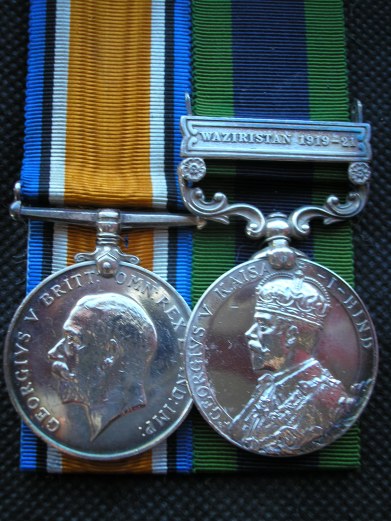
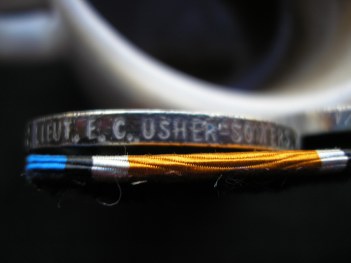
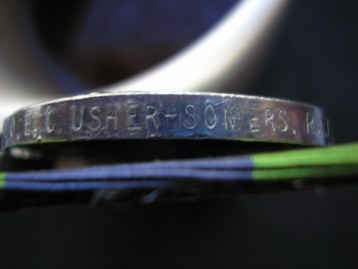
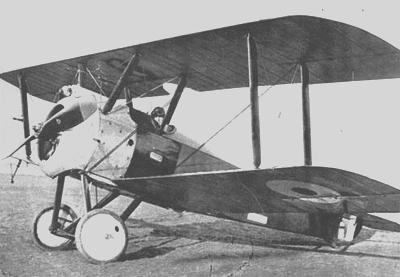 0
0 -
Interestingly I have two 14-15 Stars to the Ind Tel Dept and 2 afghan NWFs 1919 one to Ind Tel Dept. the other Tel. Dept. (all awarded to Indians).Paul
Very nice, but different units to The Indo-European Telegraph Dept. I have a pair to a R. Wilcock and his MIC says he was a signaller and later a Sargeant. I wish I knew more as the line, which ran through Persia, was shut down soon after the war started.
0 -
I.E. Tel. Dept. Is Indo-European Telegraph Department and NOT Indian Engineers Telegraph Dept. It's a very scarce to rare unit that worked in what is now Iran.
0 -
A wonderful non-combatant bar of four by Gust. Uhlig.
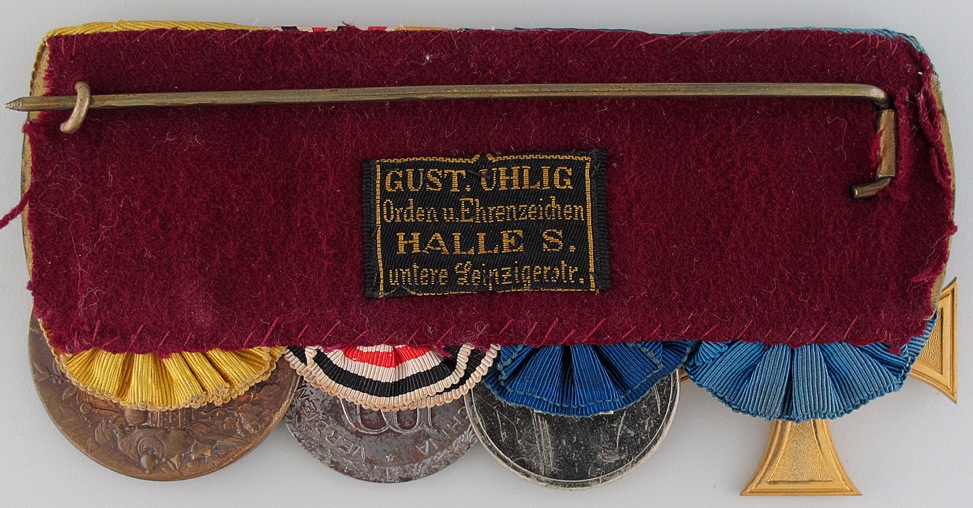
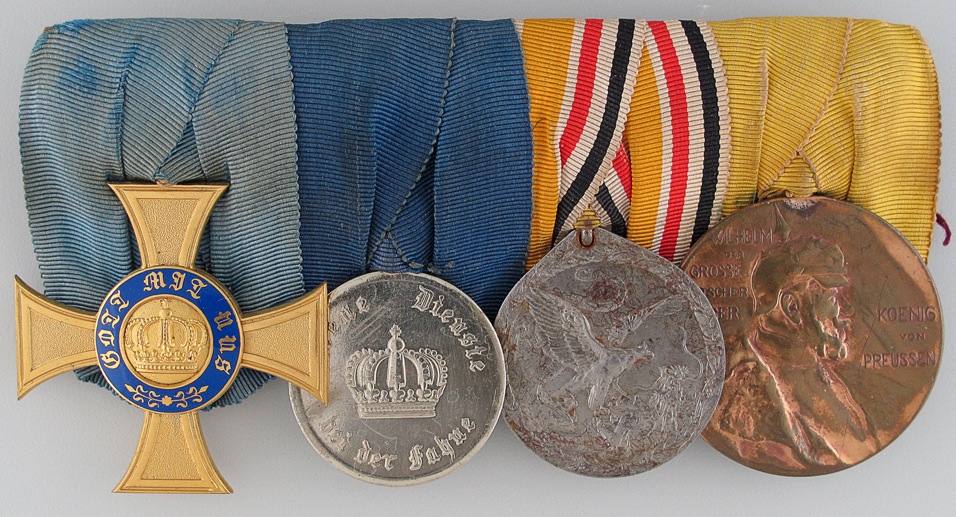 0
0 -
John,
Thank you for showing us your two 617 Squadron groups, what a fine research and description you did.
Best regards
Eric-Jan
Only one group, but there's a lot of info and it's a great Bomber Command group. ;-) thanks!
0 -
WO. Norman Batey is mentioned in Cyril Charles Witlshire's Memoires of 617 Squadron as he was one of the crew members who flew with Batey on ED866 and was shot down with him and became a PoW with him. http://homepages.ihug.co.nz/~janter/617/
In early December, a request was received from 161 Squadron for assistance with their duties, due to lack of aircraft and crews through losses. This squadron was located at Tempsford near Cambridge, and was engaged in all facets of underground assistance, such as dropping of agents and supplies, arms etc., to the European underground units. They operated solely on full moon nights because trips involved low level flying and visible map reading.
617 was requested to supply 4 aircraft and crews, and of course, everybody wanted to go to break the monotony of our daily training. We were lucky to be sent along with (pilots names) - FIt. Lt. McCarthy (American), FIt. Lt. O’Shaughnessy, W/O Weeden, and of course us. We flew down to Tempsford, on I think, the 8th December, 1943, arriving late afternoon. Our job was going to be to drop canisters at low level to a designated field in France, near I believe, Tournon. Because Halifax aircraft were normally used to drop these canisters, we had to wait whilst our Lancasters were modified, and the trip was finally laid on for 9/12/43, but fog blanketed Tempsford that day and operations were cancelled. Being so near to London I requested permission to go home to see my wife whom I had married on October 27th at Stamford Hill in North London - a white wedding but necessarily quiet being wartime - also to see my parents. Permission was granted, so along with Chuffie, Mick, Don and Jack, we went to London. They had a night on the town whilst I went home. The morning of 10th December dawned with still the very heavy fog and I doubted whether the trip would be on. I said goodbye to Doreen and hinted I would probably be home in the evening unless the weather lifted.
After a slow trip by train to Tempsford, we attended briefing in the afternoon, but the trip was in doubt because of fog. The briefing was a bit misleading because the Army major who dealt with anti-aircraft positions had said that the trip would be a “milk run” because the route had been planned in such a way that we were totally clear of all anti-aircraft emplacements - how wrong he was. I think that because of the delay thru’ weather, information had been leaked to the enemy because they were waiting for us. Tempsford of course, was a top security airfield, but because of the many “foreigners” engaged in this type of work, information could have been leaked. We were due to leave about 8 pm at 10 minute intervals in the following order:- McCarthy, O’Shaughnessy, Weeden and Bull. We were last because we were a non-officer crew. However, take off was all mucked up due to delays in fitting the canisters, and we finally took off at ½hr. intervals. We were the only four aircraft operating that night, therefore, the radar defences only had our one batch of aircraft to follow. Being as the trip was to be at roof top height, we debated whether to take our parachutes, but decided to carry them. A good job we did.
We finally took off at about 2040 hrs. in Lancaster 111 No. ED 886 for a Special Duties operation over France to drop canister supplies in the Boulogne area near a place called Doullens. We headed over the Channel at wave height to keep below the radar, and crossed the French coast at a point west of Boulogne. We then turned S.E. flying at 50 ft. on the radio altimeter to pick up our dropping field in the Doullens area. We came to a small village in I think the St. Pol area, and on approach we climbed to about 300-400 ft. so as to recognise the village and make sure if it was our turning point. It must be understood that navigation was by visible map reading, and, therefore, to find our dropping field meant extra surveillance especially at turning points.
As we approached the village and climbed a little, we saw a fire burning ahead and possibly should have given some thought that it might have been one of the three aircraft ahead as it certainly turned out to be. Had we thought of that eventuality, we could possibly have foreseen the ferocious flak attack we were about to be subjected to. We climbed to about 350 ft when suddenly light flak batteries opened up on our starboard bow and I watched the incendiaries heading our way, but they seemed to be drifting below and I immediately rammed the throttles to give maximum power to enable Chuffie to take evasive action.
Being full moon we could see the houses on the ground, and as Chuffie threw the plane around the skies I watched the shells coming and I watched the last incendiary shell go under and I yelled out, “We’re through”, but that last shell hit the inboard port petrol tank and the whole wing went up in flame. Chuffie immediately gave the “bale out” orders and flashed the signal lights to all crew positions in case their intercom was not working. Immediately the order was given Norman Batey (bomb aimer) opened the nose hatch and jumped followed by Mick Chamberlain (navigator) who pulled his ‘chute in the cockpit which I bundled into his arms, and followed by the mid-upper gunner and then myself. Prior to going I had attempted to clip the pilot’s parachute on, but every time he eased his weight on the controls, the aircraft tried to slip away down to port, so in the end the pilot told me to go as he could not hold it airborne much longer, so I went and it is miraculous to me that Chuffie was able to get his ‘chute and jump to safety because by this time the aircraft was diving and very low. He landed in a church graveyard jarring his knees, dropped his parachute into a water barrel and crawled from the church-yard on hands and knees into a pair of jackboots, and for Chuffie the war was over, but we met up later.
Meanwhile, Mick, Norman and I landed in the same field and gathered together and decided which way to go. Somewhere near us, McWilliams, the mid-upper gunner, must have landed but he took off on his own and from all accounts made himself known at the nearest house and was soon back in England - 6 weeks. We, having taken notice of escape lectures in England, decided to do things by the book, headed South, opposite way to what we could be expected to go, and decided to avoid all houses like the plague. I suppose we walked a couple of hours when Norman, who had lost a shoe on his descent, began to feel the effects of walking on snow covered fields and told us to go on as he could walk no further. We decided not to leave him but go into a village in the hopes of picking up a shoe of some sort.
We made our way into a small village and decided to try the church where at least we could bind his foot with a leather hassock. We entered the church to find that the congregation area was boarded off, probably used for war supplies, so as it was now about 3 am, we decided to climb to the belfry and lay up for the day and then decide on what to do. We climbed one behind the other up a spiralling iron staircase until we got to the landing where there was a short 8 ft ladder to the belfry itself. I went up the ladder first, followed by Norman with Mick bringing up the rear. As I climbed up and put my head through the hatch into the belfry, a voice spoke from the darkness and I could not understand him so I tried him in French and English. This bloke was in a queer position because he could tell by the noise we were making that he was outnumbered, but kept talking away until Mick Chamberlain said, “Christ, it’s a bloody Gerry”. We promptly did an about turn and climbed all the way down whilst the Gerry blew a whistle to attract attention. We stepped out of the church and then the Gerry in the tower put a bullet over our heads which stopped us. A couple of minutes later two Panzer troops, armed with sub-machine guns, came round a corner and took us prisoner.
We were marched to a sort of guard room where we were searched and watches etc., were removed, but we were treated well, fed and given smokes before being locked up in a room. Later on that day we were taken by truck and slung into Amiens gaol. We lay there all day and about 4 pm a Luftwaffe feldwebel (Sgt) and two airmen arrived to take us to Paris and then by train to Dulagluft (Air Interrogation Centre) near Frankfurt. All three of these Germans spoke English and tried to get information from us, but to no avail so they gave up. We suffered no ill-treatment, and about midnight our guards came to the cell and said, “All out we are off to Paris by truck”. We went out of the gaol and climbed into the back of the straw filled truck and a voice yelled out, “Get off my bloody legs”. It was Chuffie. He had been held in the same gaol.
The truck drove us to Paris arriving about 6 am and then we used public transport to move from one station to another for the train to Frankfurt. We were hoping that the underground would rescue us etc., but no one seemed to take any notice. The train journey took quite awhile, but our captors were friendly, but at no time were we allowed out of the carriage on our own, and so we finally arrived at Frankfurt station, made our way outside where we had to wait for a tram. The German people weren’t friendly and threw things at us, but guards did their job well and we boarded a tram and headed for Dulagluft which we reached in about ½ hr.
On arrival we were documented, photographed, finger-printed and thrown into a small cell and left to think about our position. We were not near each other, in fact we were not to see any of our crew until we were finally released and taken to the P.O.W. camp.
Over the next 15 or so days, cannot remember how long, we were in these little cells, subtle methods to get us to talk were tried but to no avail. For the first three or four days, we were left alone and were given a form to fill in. It included lots of information regarded as secret, such as Squadron Number, where stationed, targets etc. All this stuff we ignored and just filled in our No. rank and name. These forms had been dropped in our cells by a very nice chap who said he was from the Swiss Red Cross and if we would fill in the forms he would let our next of kin know we were safe. He was very nice, gave us cigarettes and sweets etc., and said he would be back the next day to pick up the completed forms. When he arrived next day I gave him my form and he said, “Oh come now, you have not completed the form”, so I said that I had filled in all I was required to do and the other information we did not have to divulge. He then said that he would leave it another day as my parents and wife would be notified sooner if I gave all the information and really it did not matter, they knew all the answers anyway. When he came back the next day and saw I had not completed the form, he became a raving maniac, screaming and shouting and demanded that I stand in front of a German officer. I remarked, “How can you be a Red Cross rep one day and a German officer the next?”, and he stormed out cursing blue murder. We had been warned in England of false Red Cross reps and to only give number, name and rank. As they got no information from the four of us, they then commenced a series of interrogations to last about the next 2 weeks.
I must explain that we were in small individual cells and had no contact whatsoever with any other members of the crew. The cells were fitted with heaters and our first 2 or 3 days we were treated well, fed, and no disturbances at night.
I had one interrogation on the second day, and it was held by a psychiatrist in civilian clothes. It did not amount to much and I gave the usual number, name and rank. He did not pursue matters much except that I may as well tell him what he wanted to know because they knew it anyway. He tried to convince me by saying my squadron number (which they can tell by the aircraft letters), and base and various operations I had been on. What they really wanted was the weight (confirmed) of the bomb we had used on our previous raid on the Antheor Viaduct. After several repeats of number, name, rank, he said, “Oh! take him away and soften up” - all in English. From now, although I suffered no physical interference, the mental anguish was quite acute. The cells had no internal toilet buckets, so if you wanted to go you had to turn a handle on the door and a flap would fall and the guard would eventually arrive and take you to the toilet. It was the way they played it which caused the anguish, because after being put in the cell I waited until I wanted to go and then turned the handle, but it took the guard about an hour to come for me. Next time I turned the handle very early and he arrived immediately and abused me because I did not really want to go. It was the mucking around which upset people.
Another way was to interfere as much as possible with our night’s sleep and one way of doing this was cell heating. I would go to sleep in underpants because it was warm with cell heating on, but about 1 am they would turn all heating off so I would wake up, put all my uniform on and all the blankets, and finally after about an hour get back to sleep. Then the heating would go on full and you would wake up sweating and disrobe again only to have the heat go off.
This went on all night and you can imagine that one went to his daily interrogation feeling like a “wet week”.
On my third day’s interrogation he went through the usual questions and threats but gained nothing. He then said we would all probably be killed because we were saboteurs and spies. Apparently the supplies carried in the canisters contained money, clothing, arms and ammunition which made us supporters of saboteurs. You can imagine the worry it would cause because you saw nobody else to discuss it with. On the third interrogation, the psychiatrist had a secretary with him and he began his usual questions and I gave my usual answers, and then he made me go and sit in the corner and then for the next hour he dictated to his secretary my life from the time I joined the RAF until mid 1942 - the time of Crete. He had all the details, where I had served, courses I attended and marks attained, my parents address etc. He even had a record of athletic races I had won in Iraq in 1939. The purpose of all this being to get you to talk because they knew it all anyway. Of course part of the technique at this time was insufficient food, no books etc., just all day to lay on our bed and think of whether they really could shoot us or not.
On my fifth visit my interrogator was a thuggish looking chap in uniform, and he questioned me and issued threats but got nothing in return. He said, “You may as well talk because some of your crew have already talked and have been sent now to a P.O.W. Camp and away from all this nastiness”. I disbelieved it of course and went back to my cell. Next meeting was with the bloke in civilian clothes and he wanted to know the weight of the bomb. Whilst being interviewed he had a meal sent in and ate in front of me, but offered me a meal if I would confirm the weight of the bomb. From this moment on, the type of questioning changed because the questions asked were of the type that required a yes/no answer, and these clever psychiatrists were I am sure able to read the answer to these questions by your manner of answering or your eyes. He would ask a yes/no question and you had to look at his eyes when you answered.
A new innovation was that a photograph of the bomb was placed in front of you, propped up, and he would say, “Have a good look at the photo”, and then would say, “Look at me”. He, would say, “That’s it isn’t it?”, and I am sure it would show yes or no in your eyes. It was a photo of the bomb and taken on our base, but where they went wrong was they had the figures 5,000 kgs on the photo and I would not have known whether 5,000 kgs was 12,000 lb or not.
Succeeding interrogation carried on in the same manner until about the 15th day (I think), and they said we were to be released and sent to normal P.O.W. camps. On our release a big feed was put on for the number being released and then we were on our way to Stalag IV B at Mühleberg about 20 kms from Leipzig on the eastern side of the River Elbe. The stay in Dulag Luft must have been controlled by the demand for space. I know at the time we were released they had a general clear out and it occurred at the time that air losses were reasonably high, and, therefore, they had lots more captives to interrogate.
My memory of the period of release from Dulag Luft to the arrival at Stalag IV B is a bit hazy and I cannot remember whether we travelled together as a crew, but somehow think I met them on arrival at IV B. I know that I was in the same block as Chuffie and we sort of got together, but I do not remember having much to do with or indeed seeing Mick and Norman.
0 -
Here's a fine addition to the collection and finally a RAF group with an Air Crew Europe Star to a F/Sgt - WO who was in the 617 Squadron; the Dambusters.
There were 9,838 PoWs from Bomber Command.
WWII Caterpillar Club Member Group RAF - 1939-1945 Star; Air Crew Europe Star; and War Medal 1939-1945. Un-mounted, original ribbons, extremely fine. Accompanied by his Royal Air Force Service and Release Book (named to "1479659 W/O N BATEY", with Class of Release noted as "PoW", multiple stamps on the inside back cover under Receipts for Encashment of Postal Drafts, 105 mm x 137 mm); his Caterpillar Club Membership Card (named to "W/O N. BATEY", signed by Leslie Irvin, Honourable Secretary of the European Division of Irvin Parachute Co., address label affixed to the reverse, numbered "01169", laminated, 57 mm x 82 mm); a Caterpillar Club Letter (dated April 19, 1945, addressed to "Mrs. Batey, Newcastle-on-Tyne", 127 mm x 202 mm, fold mark, lightly soiled); his 617 Squadron Aircrew Association Membership Card (named to "N. Batey L 120", laminated, 62 mm x 95 mm); and his Bomber Command Association Membership Card (named to "Norman Batey", numbered "3024", 55 mm x 88 mm).
1479659 Warrant Officer Norman Batey, 617 Squadron, Royal Air Force served in the Royal Air Force Volunteer Reserve from August 11, 1941 to November 1, 1945. He is credited with having escaped injury by parachuting from his aircraft, as evidenced by the accompanying Caterpillar Club letter. He was taken prisoner by enemy forces and held as a Prisoner of War from December 11, 1943 to May 16, 1945. During this time, it was acknowledged in the aforementioned form letter sent to his wife, dated April 19, 1945, that the Irvin Parachute Co. was very pleased to hear "that he had saved his life with an Irvin chute". They forwarded his membership card with the letter, however, it went on to state that "I regret that due to supply restrictions we are not able to order Caterpillar Pins for Prisoners until after the War, but one will be sent as soon as available." One month after receipt of the letter, he was liberated.
Batey was a crew member on Lancaster bomber ED886 which was hit by flake. He bailed out on the night of 10/11 December 1943 and was captured. His PoW number was 267434 and he was interned in Stalag IV B. See: http://www.rafcommands.com/Air%20Force%20PoWs/RAF%20POWs%20Query%20B_1.html
Lancaster III ED886 of 617 Squadron crashed near Terramesnil, in the Somme Département, not far from Doullens. Two were killed (STEWART and THORPE R.C.A.F.) and are buried in this village. Pilot BULL and 3 others were captured. F/Sgt J.H. McWILLIAMS evaded capture. Following Chorley's normal crew order, he would be the mid-upper gunner. Bill CHORLEY also note that his Lancaster took part in "Chastise" when it was captained by F/Sgt W.C. TOWNSEND, D.F.M.
The crash site was subject to a dig, which may not have been official, and one of the survivor attended the recovery. The extent of wreckage that was unearthed, and where it went is unknown. Sgt (Bombaimer) John McL. STEWART - 1368456 and Reargunner F/Sgt Donald M. THORPE - RCAF R/117355 killed and buried Communal Cemetery Terramesnil, Amiens. Also PoW: W/O G.F. BULL - 748719, Sgt C.C. WILTSHIRE - 538790; Sgt C.M. CHAMBERLAIN - 1037311 and F/Sgt N. BATEY - 1479659.
Operational records:
11.12.43
W/O. Bull, F/O. Weeden and crews reported missing from operations whilst on special detachment. Eight aircraft on night bombing practice. Six further ground crew personnel proceeded on special attachment. (Bull and Weedon were shot down carrying out an ammunition arms drop to resistance forces in Europe.)
Stalag IV-B was one of the largest PoW camps in Germany during WWII. Stalag is an abbreviation of the German Stammlager ("Main
Camp"). It was located 8 km (5.0 mi) north-east of the town of Muhlberg in Brandenburg, just east of the Elbe river and about 30 mi (48 km) north of Dresden. A sub-camp, sometimes identified as Stalag IV-B/Z, was located at Zeithain, 10 km (6.2 mi) to the south in Saxony. The camp, covering about 30 hectares (74 acres), was opened in September 1939. The first inmates were about 17,000 Polish soldiers captured in the German September 1939 Offensive. For the first two months they lived under the open sky or in tents. Most of them were transferred to other camps. In May 1940 the first French soldiers arrived, taken prisoner in the Battle of France. In 1941 Australian, British and South African soldiers arrived after the fall of Tobruk, and later in the year Russian PoWs from the invasion of the Soviet Union. In October 1944 several thousand more Poles arrived, members of the Armia Krajowa ("Home Army") captured after the Warsaw Uprising, including several hundred women soldiers. In November 1944 the Polish women were transferred to other camps, mainly Stalag IV-E in Altenburg and Oflag IX-C at Molsdorf. At the end of December 1944 about 7,500 Americans arrived from the Battle of the Bulge and At least 3,000 of them were transferred to other camps, mostly to Stalag VII-A. On 23 April 1945 the Red Army liberated the camp. Altogether soldiers from 33 nations passed through the camp.
Interestingly, the British prisoners published two periodicals: the wall newspapers The New Times and a richly illustrated Flywheel. The Flywheel was founded by Tom Swallow, and comprised pages from school exercise-books that carried hand-written articles with colour illustrations from whatever inks the editorial team could produce from stolen materials, like quinine from the medical room; these were stuck into place with fermented millet soup, kept from the meagre camp rations. One copy per issue was produced, to be circulated among members throughout the camp. When extracts were published in hardback format in 1987, the book ran to two reprints. An additional periodical, The Observer was published between December 1943 and May 1944. The camp's Welsh soldiers also created their own periodical called Cymro ("Welshman"), edited by prisoner William John Pitt. The magazines were produced between July 1943 and December 1944. Eight issues of the magazines were created, and out of these one was lost in the camp. Although most of the issues are in English, two pages are in Welsh
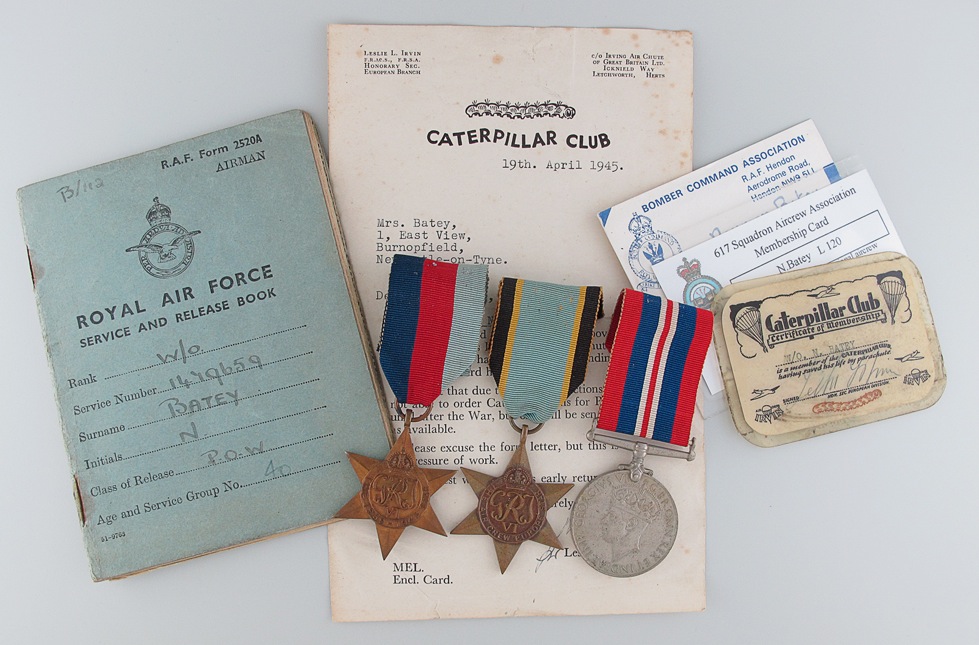
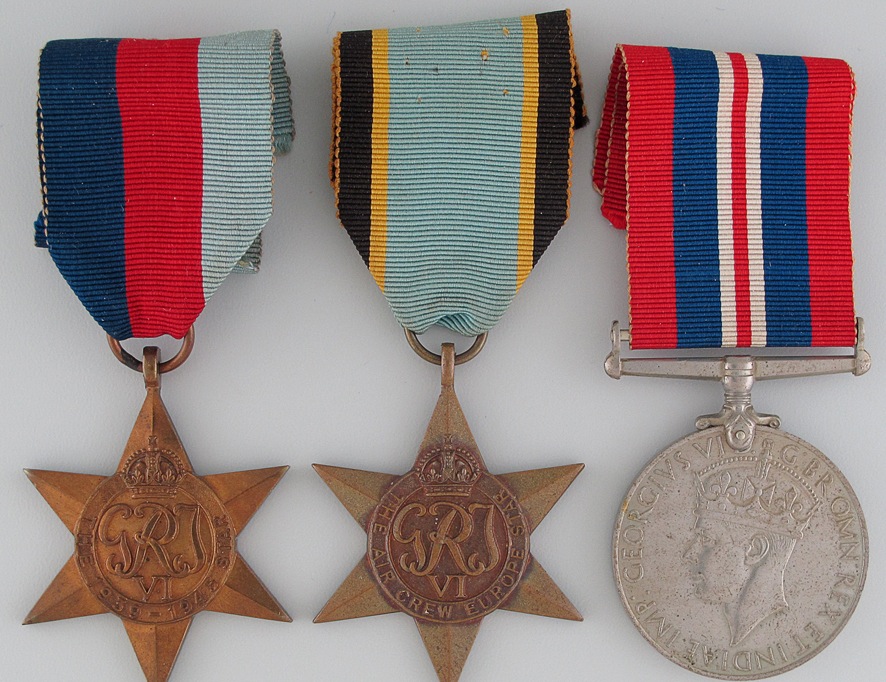
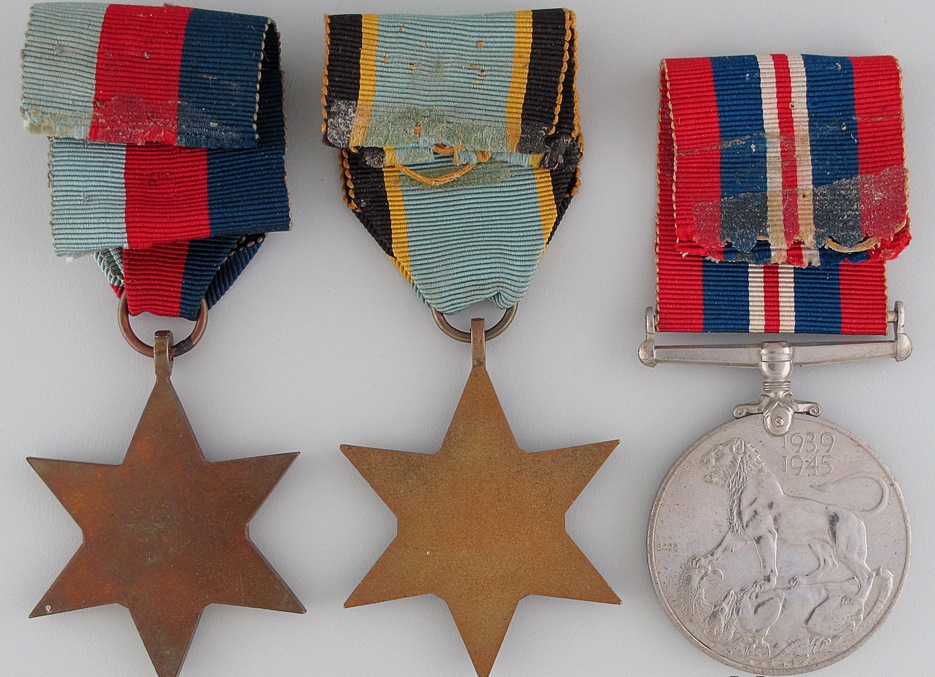
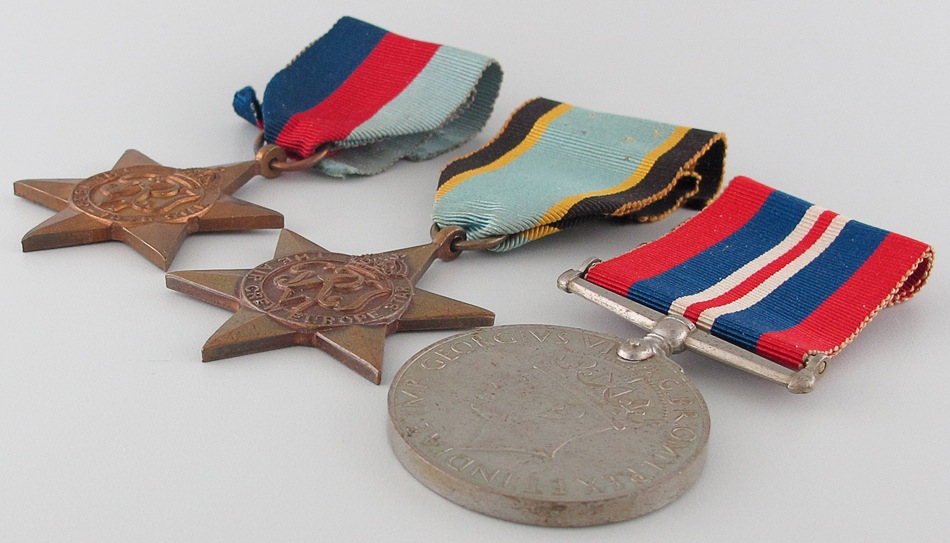
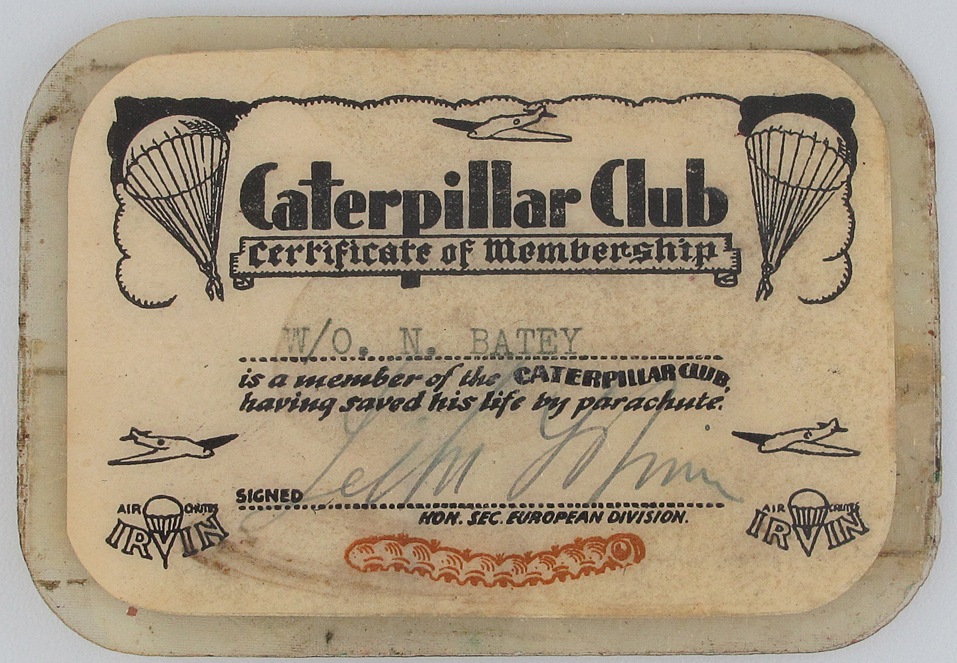
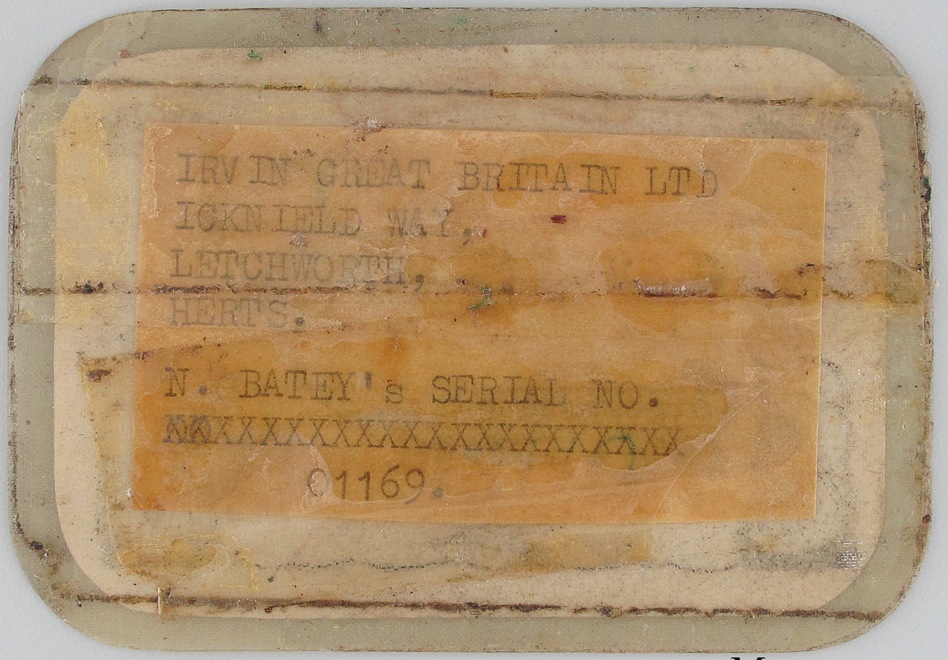
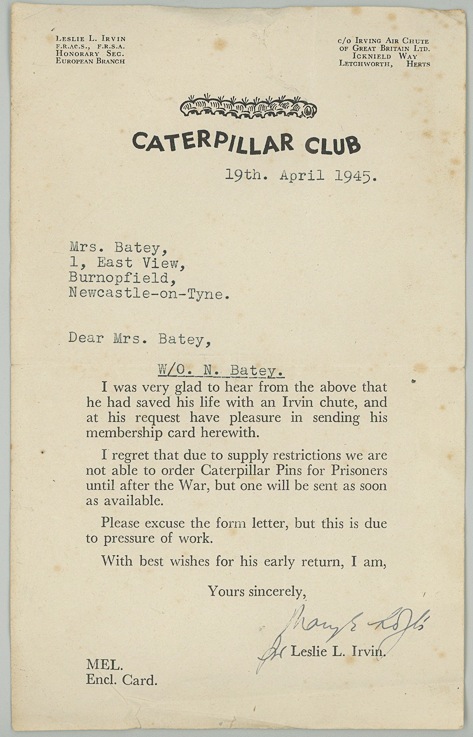
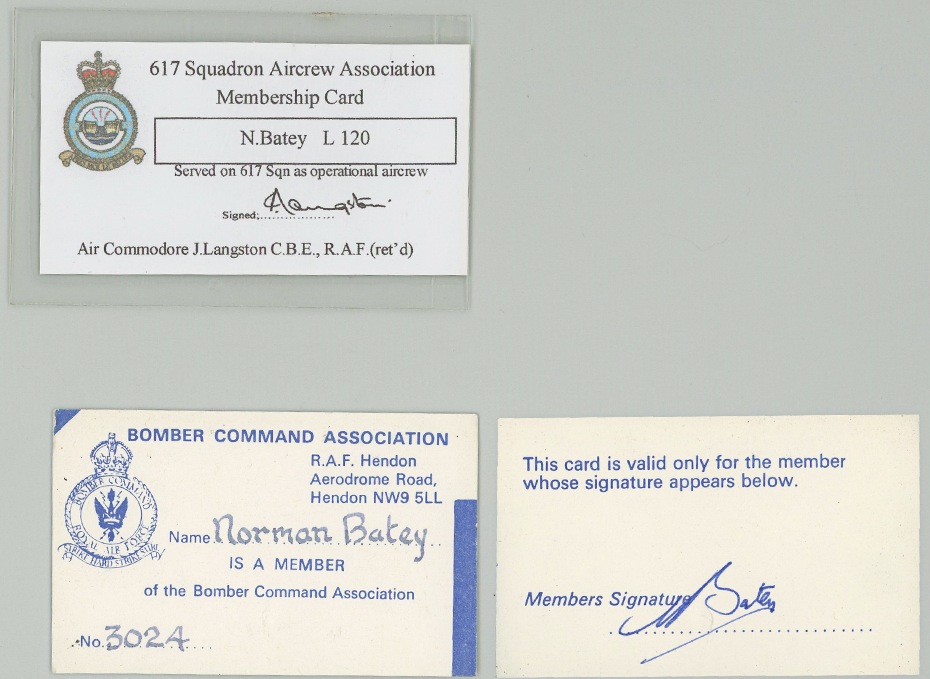

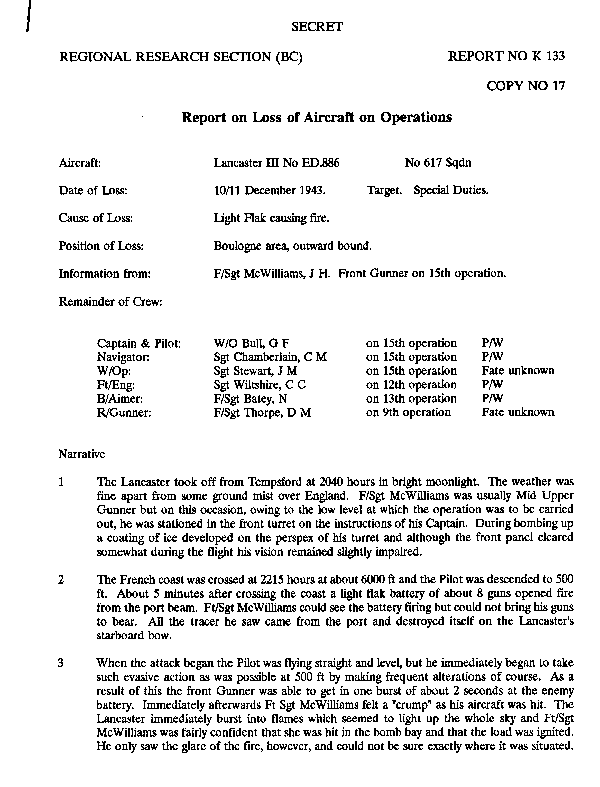
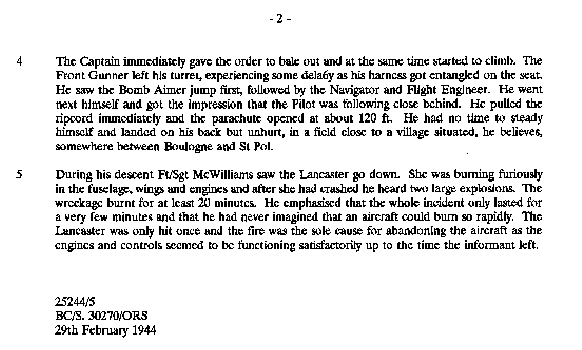 0
0 -
And yet another beautiful 1870 bar with a Gust. Uhlig label.
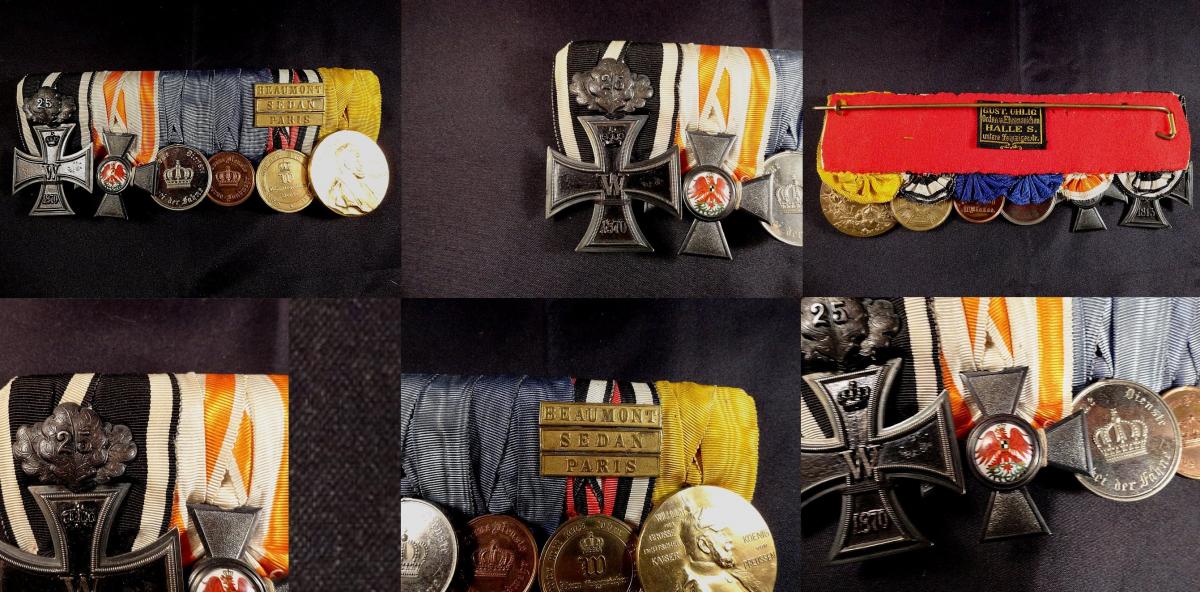 0
0 -
A great frack 1870 bar with label.
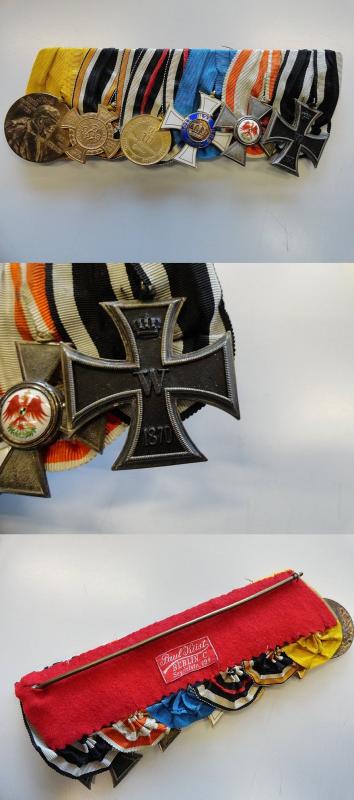 0
0 -
Hi,
If i had bought it on ebay and it was 10 years of tarnish caused by the local coal fired power station in XXX I would probably go ahead and do it... but this one is a bit special for me.... It is in my "Holiday medals" frame... each with its own story... this was pulled out of a drawer in a Souk, I went back 2-3 times to bargain, and carried it back to th hotel knowing this had 100 years of Patina on it...
if it were clean it would be "just a medal"...
Keep it the way you found it; it's great!!! I remember bargaining for things in the Souk in Jeddah etc. and I always started off at 1/3 the price and would walk out two or three times with the guy chasing me. I usually ended up getting it for 50% of the orginal price at the very most. I bought a very very nice BEM to a New Zealander for the Korean War; one of only five awarded for a song. To make a long story short, today it is polished and in the hands of the original recipient! It's a small world.
 0
0 -
WWII Battle of the Bulge PoW group to:
Staff Sargeant 35676063 Elmer E. Merryman, 99th Infantry Division
Group consists of:
Bronze Star - Elmer E. Merryman
PoW Medal
Good Conduct Medal
American Campaign Medal
European, African, Middle East Campaign Medal
Victory Medal
Occupation Medal with Germany clasp
Elmer E. Merryman, 74, of Lexington, Ky., died Sunday, April 7, 1996, after a long illness. Born in Versailles, Ky., he was a son of the late Edward and Eliza Bumgardner Merryman. He was a U. S. Army veteran of WW II, serving with the 99th Infantry Division. He was wounded and captured by the German Army in the Battle of the Bulge and remained a POW until the end of the war. Survivors are his wife of almost 50 years, Blanch Million Merryman; a daughter, Peggy Lee McCord of Lexington; three sons, Edward Hughes Merryman of Hopkinsville, Glenn Ray Merryman of Marietta, Ga., and Elmer Daryl Merryman of Quinton, Va.; nine grandchildren and two great-grandchildren. Burial in Camp Nelson National Cemetery in Jessamine County, Ky.

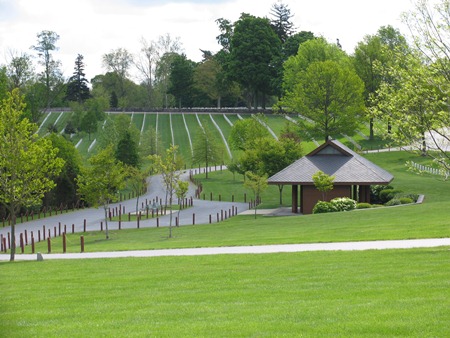
 0
0 -
WWII PoW group to:
PFC 36881353 Randall W. Breedlove, 351st Infantry Regiment, 88th Inf. Division
Dental Corps; captured Italy.
PoW 26 October 1944 - repatriated 25 June 1945.
Group consists of:
Bronze Stare - Randall W. / Breedlove
PoW Medal - Randall W. / Breedlove
Good Conduct Medal - Randall W. Breedlove
American Campaign Medal
European, African and Middle Eastern Campaign Medal - two stars
WWII Victory Medal
Combat Infantry Badge
Ruptured Duck
From the Good Conduct Medal, it appears that these were late issues.
http://www.ww2pow.info/index.php?page=directory&rec=47479
Randall Wilson Breedlove died in 2008 at the age of 87. He was drafted on October 6, 1943 and went overseas in March 1944, spending a few weeks in North Africa before the invasion of Italy began. He was captured in Italy and transported to Germany and imprisoned in Stalag VII A (Moosburg). The camp was liberated on May 2, 1945. In June 1945, Randall was returned to the U.S., his wife and infant son. He and Elizabeth had three more children. He described his capture in an article his hometown newspaper wrote about his return on June 12th:
"We were making a roadblock to keep the Germans from getting through on hill in the north when the Jerries outnumbered us. Being Americans, though, we certainly weren't going to let them take us without our fist putting up a good fight, but they were just too many for us. We were disarmed and marched in the pouring rain to a German observation post where they relieved us of our raincoats. Then we were questioned by German officers. They wanted to know all about our movements, our plans, how many men there were in the whole outfit, and how much equipment we had; but we didn't tell them a thing. They soon found it was useless to try to force anything out of us. We were marched up the main highway and then shoved into trucks to Mantavia where we were put in box cars, like cattle, for the trip to Mooseburg, the journey taking three days and nights through the Alps. Our next stop was Stalag 7-A. There were always guards with ready rifle butts close by. Sometimes they hit the poor fellows that were too weak to work. They hit them any place they could -- on the head, across the back, they didn't care. Not long before we were liberated we were served grass soup, yes that's what it was, and our ration of bread that tasted like sawdust. In all the six months we were prisoners we never had clean clothing. We wore the same shirt, pants and underwear and were pestered by lice. On May 2nd, I was working in the kitchen when the first American scout came up the street. We were liberated that day by the 14th Armored Division. Well, you can probably guess the excitement that followed."
For more information on the 88th Infantry Division in Italy: https://armyhistory.org/09/the-88th-infantry-division-in-italy/
For more information on Stalag VII A (Moosburg): http://www.moosburg.org/info/stalag/indeng.html
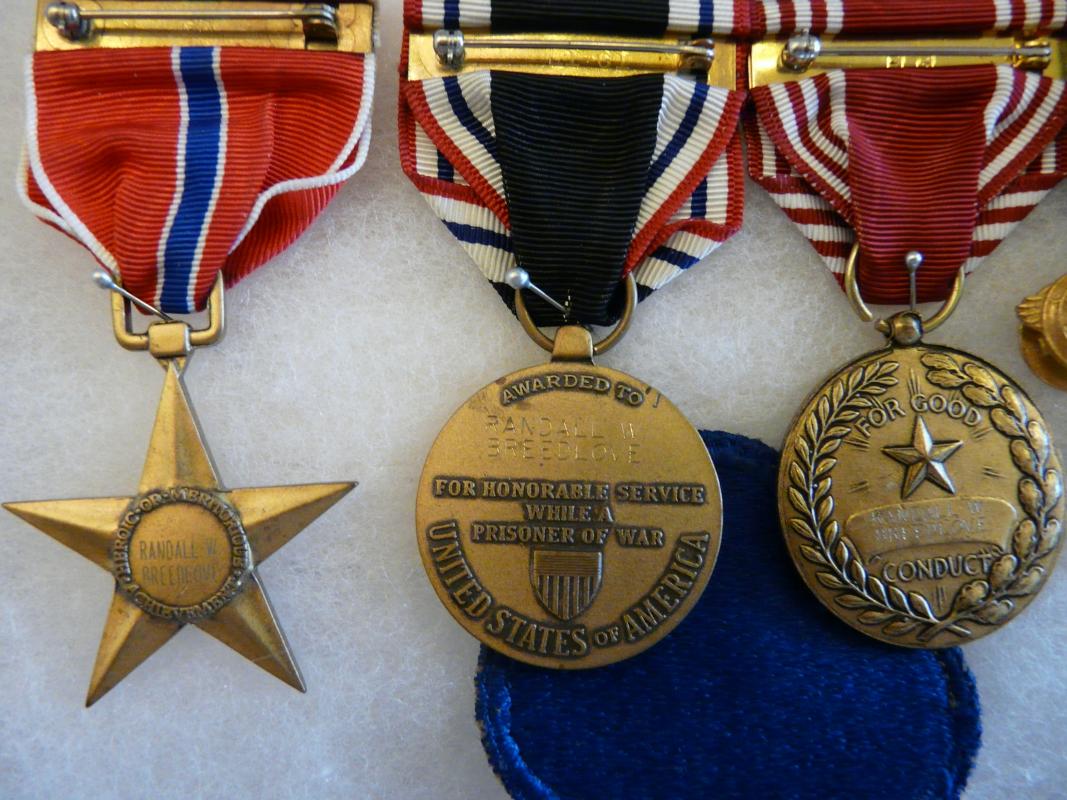

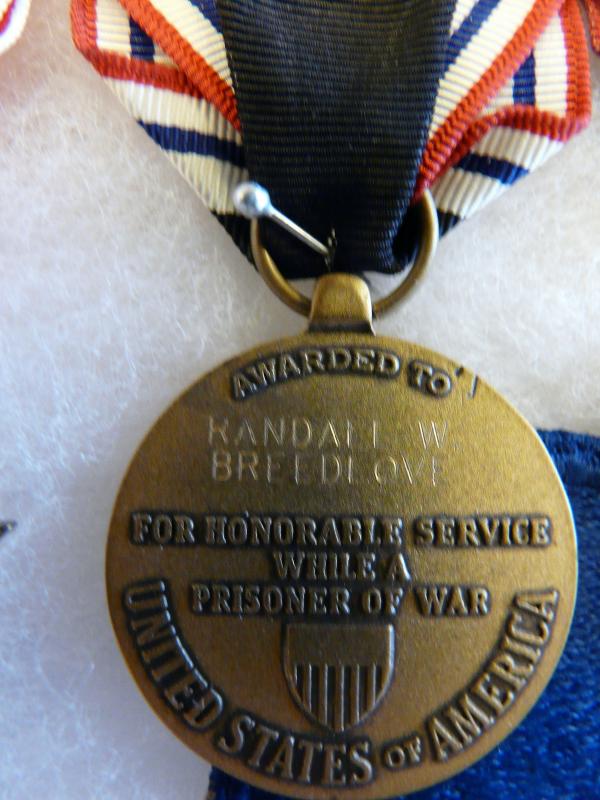
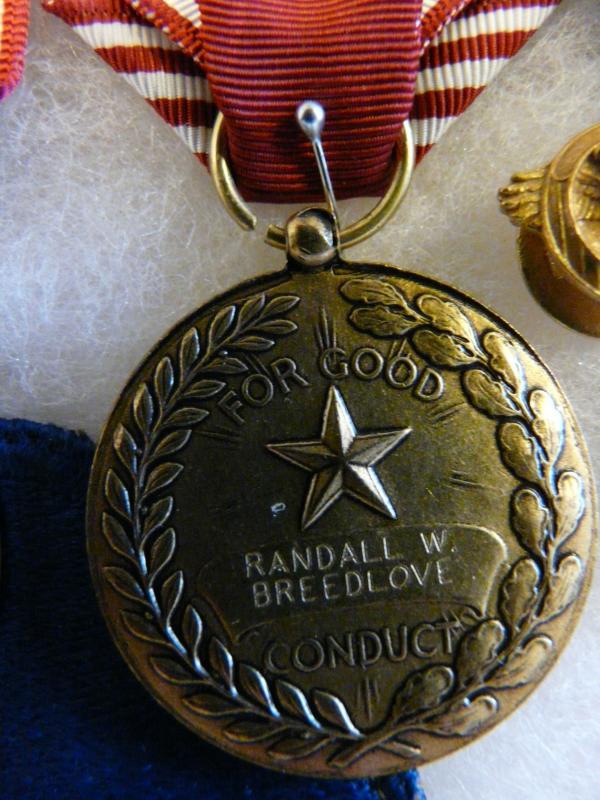
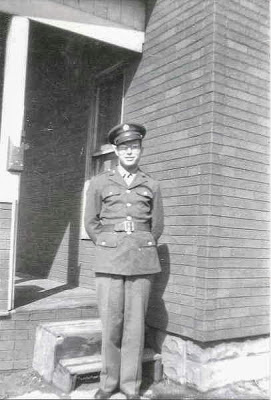
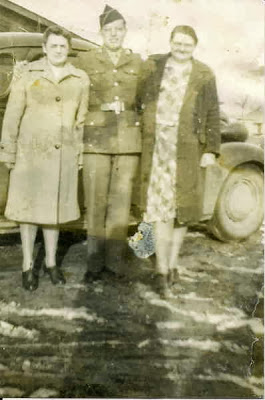
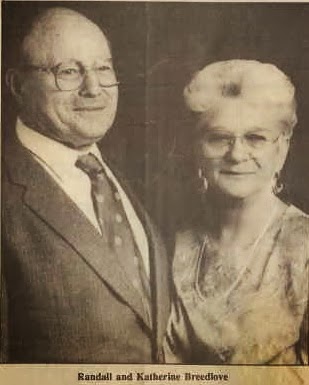 0
0 -
I'm happy to take them. What do I need to do???
0



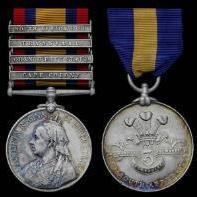
WWI Medals to troops in Aden
in Great Britain: Empire: Colonial Including South Africa & India: Awards, Militaria & History
Posted · Edited by azyeoman
A 1914-15 Star officially named to"
No. 23265
GNR. MEHAR KHAN,
I.C. ARTY. Aden
Indian Coastal Artillery Aden